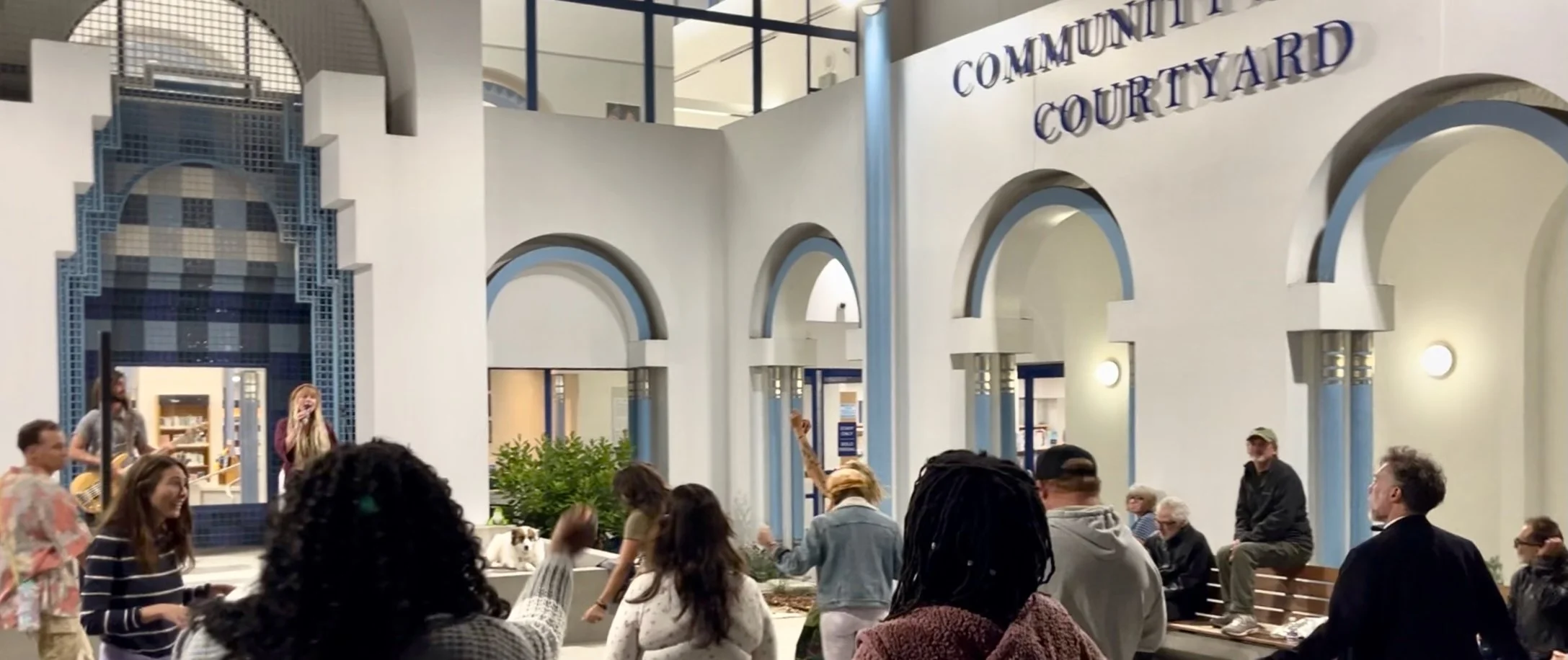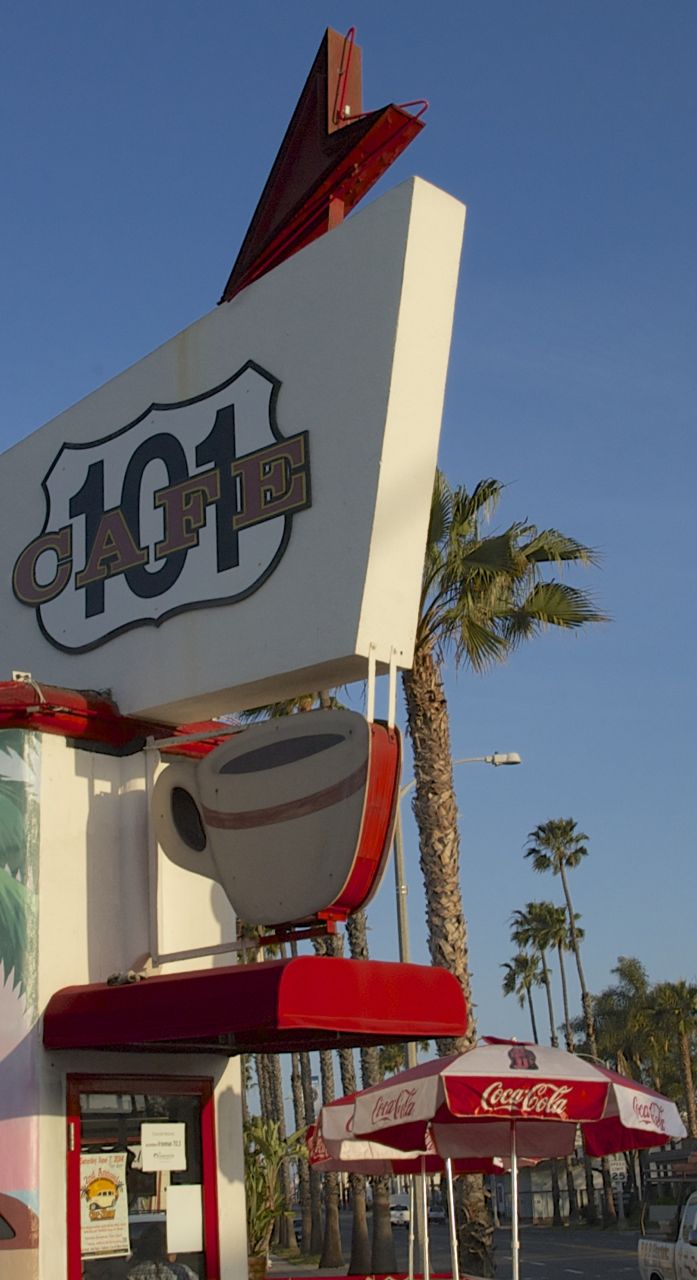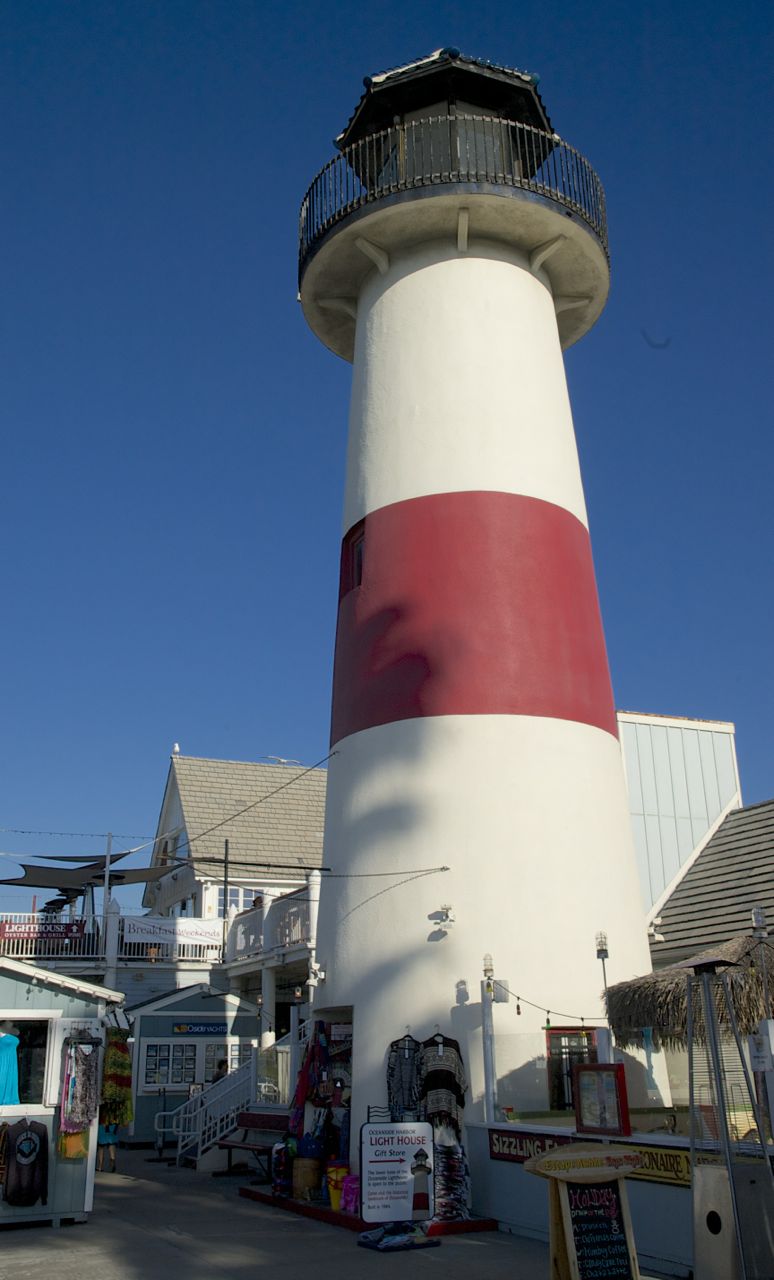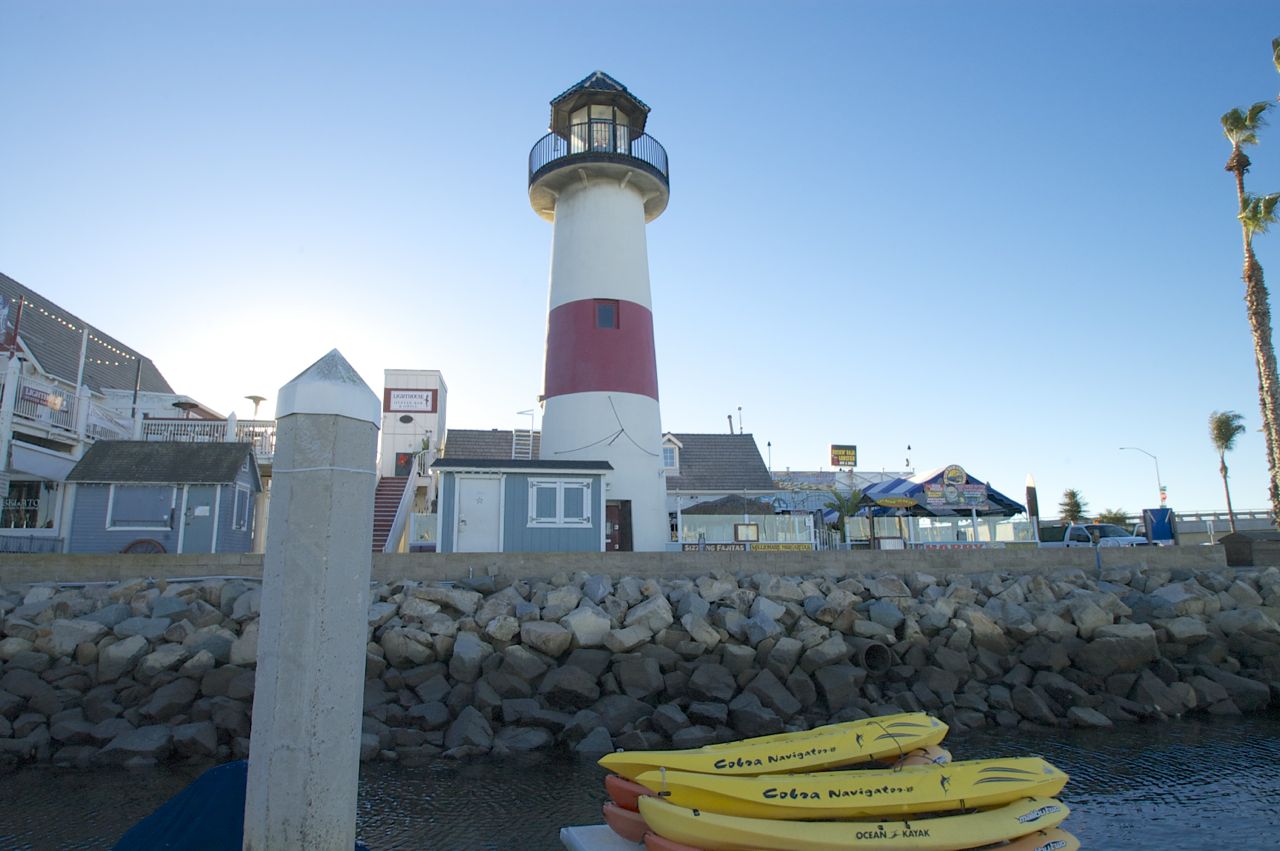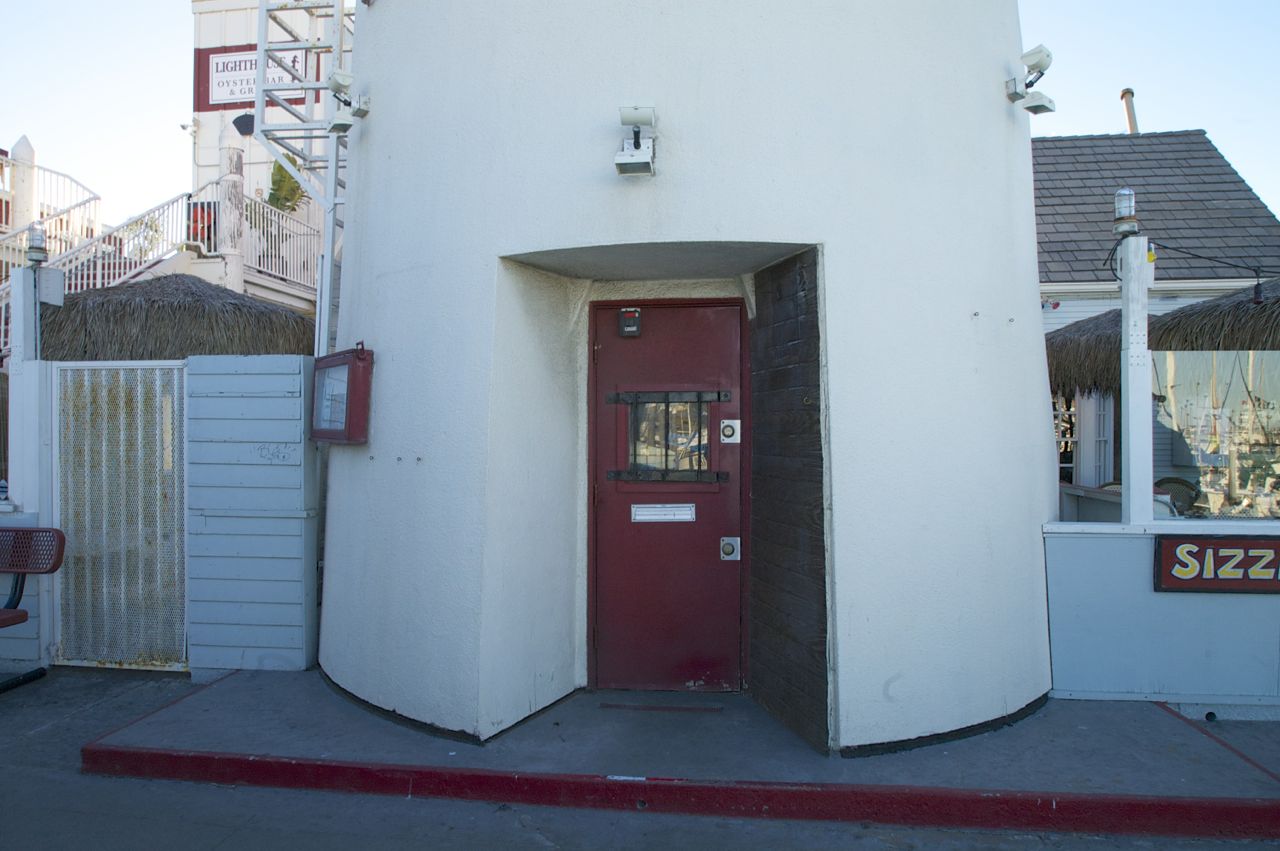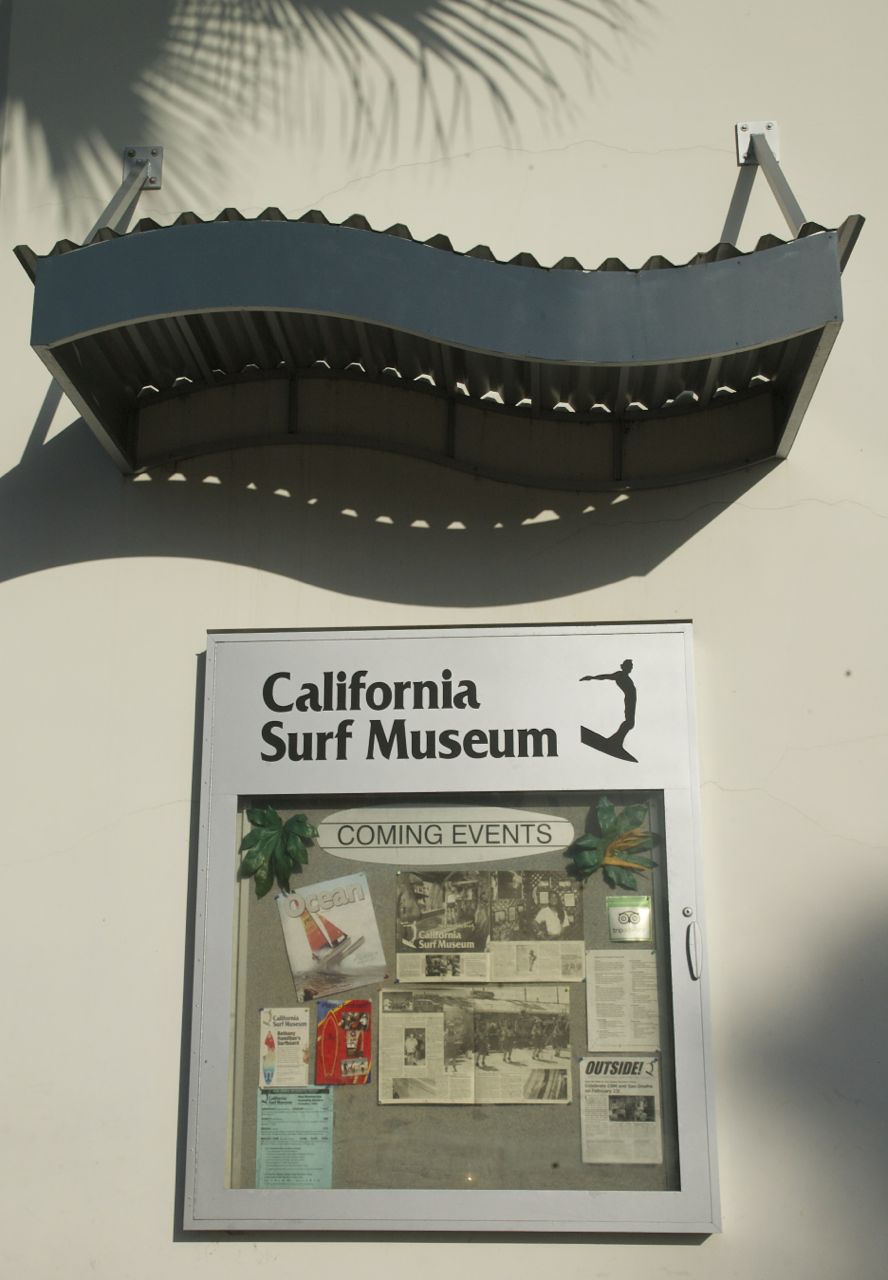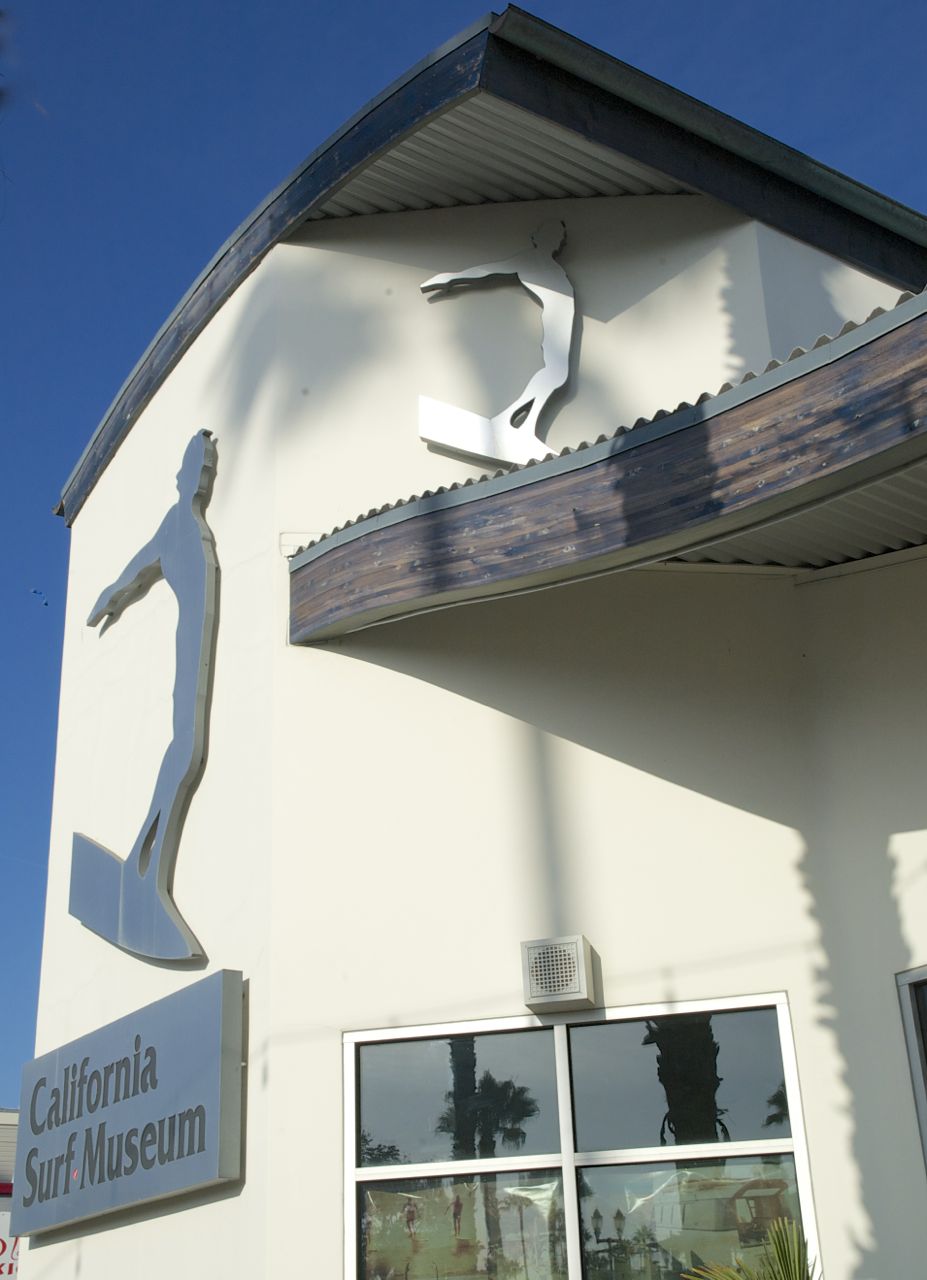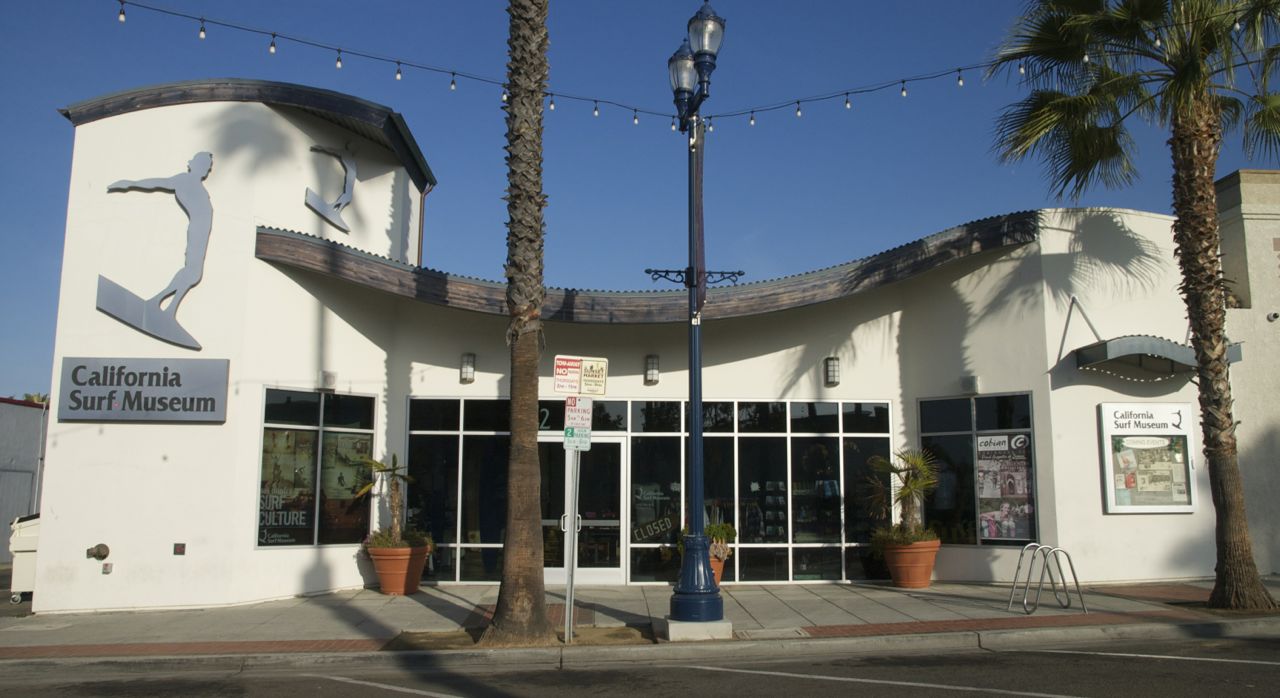2024
Local Art Walk
Americanization School
Irving Gill, 1931
1210 Division St
📸 2014 © Brigid Parsons
Now the Crown Heights Community Resource Center
















Downtown Post Office
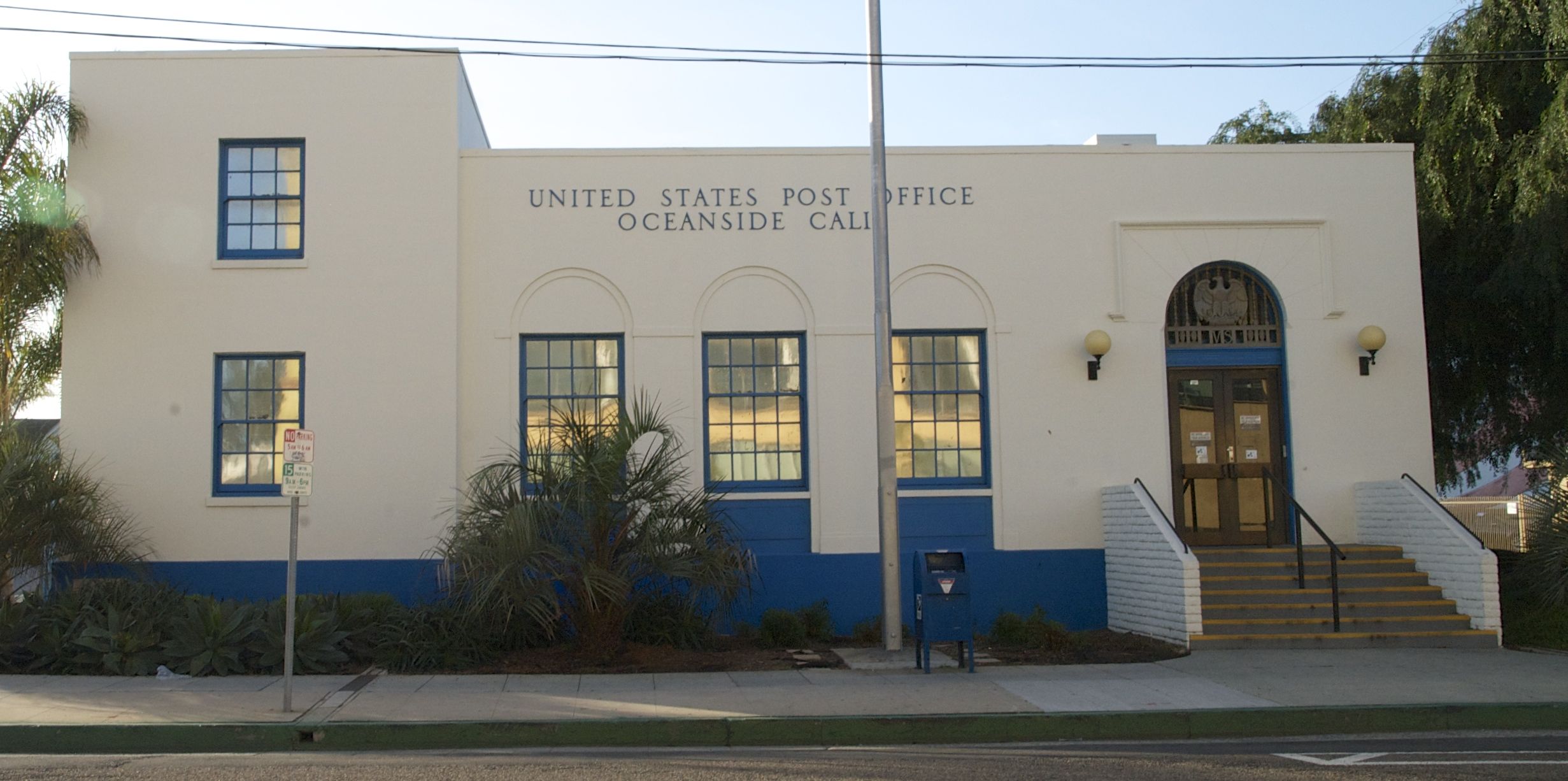
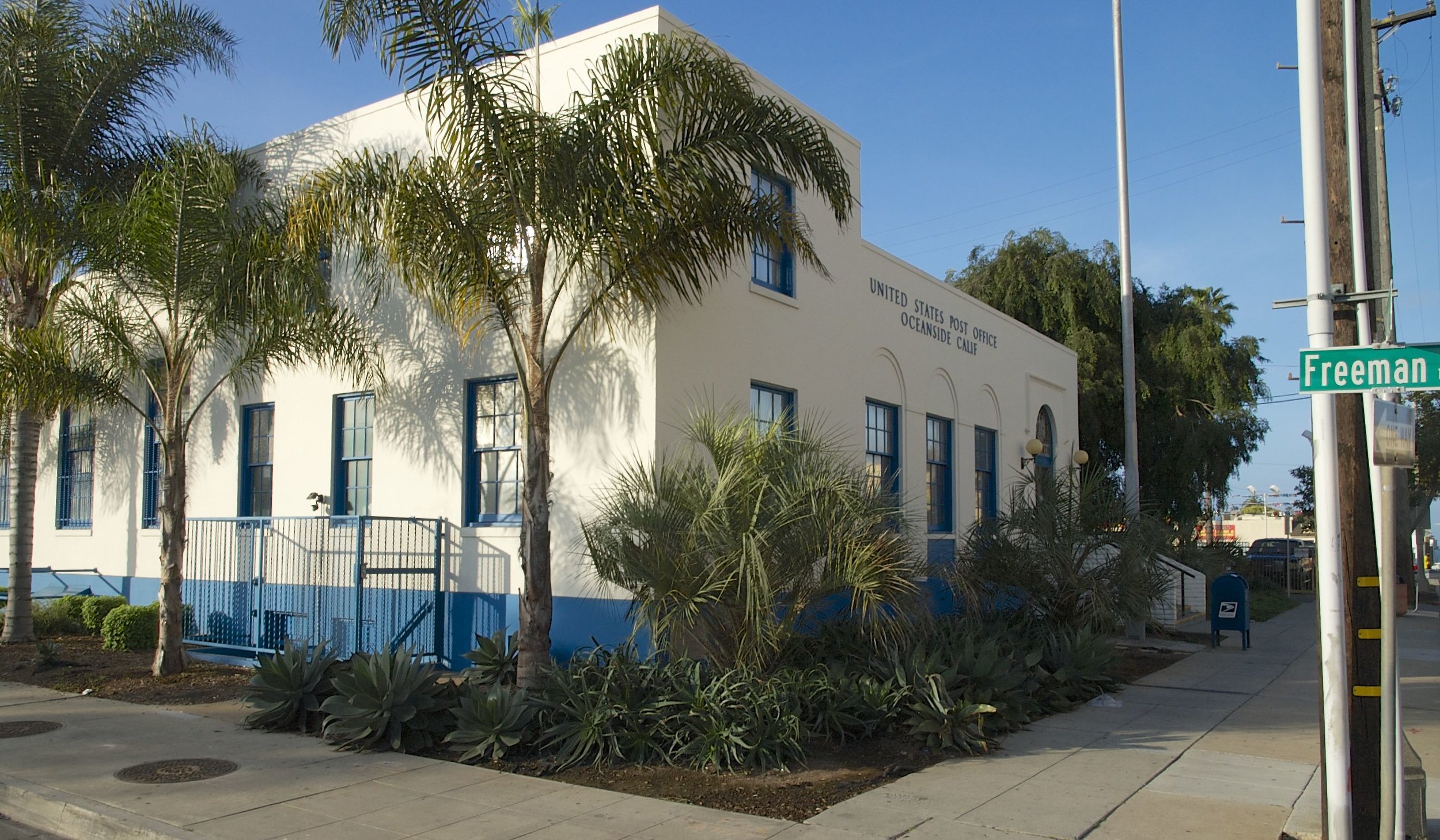
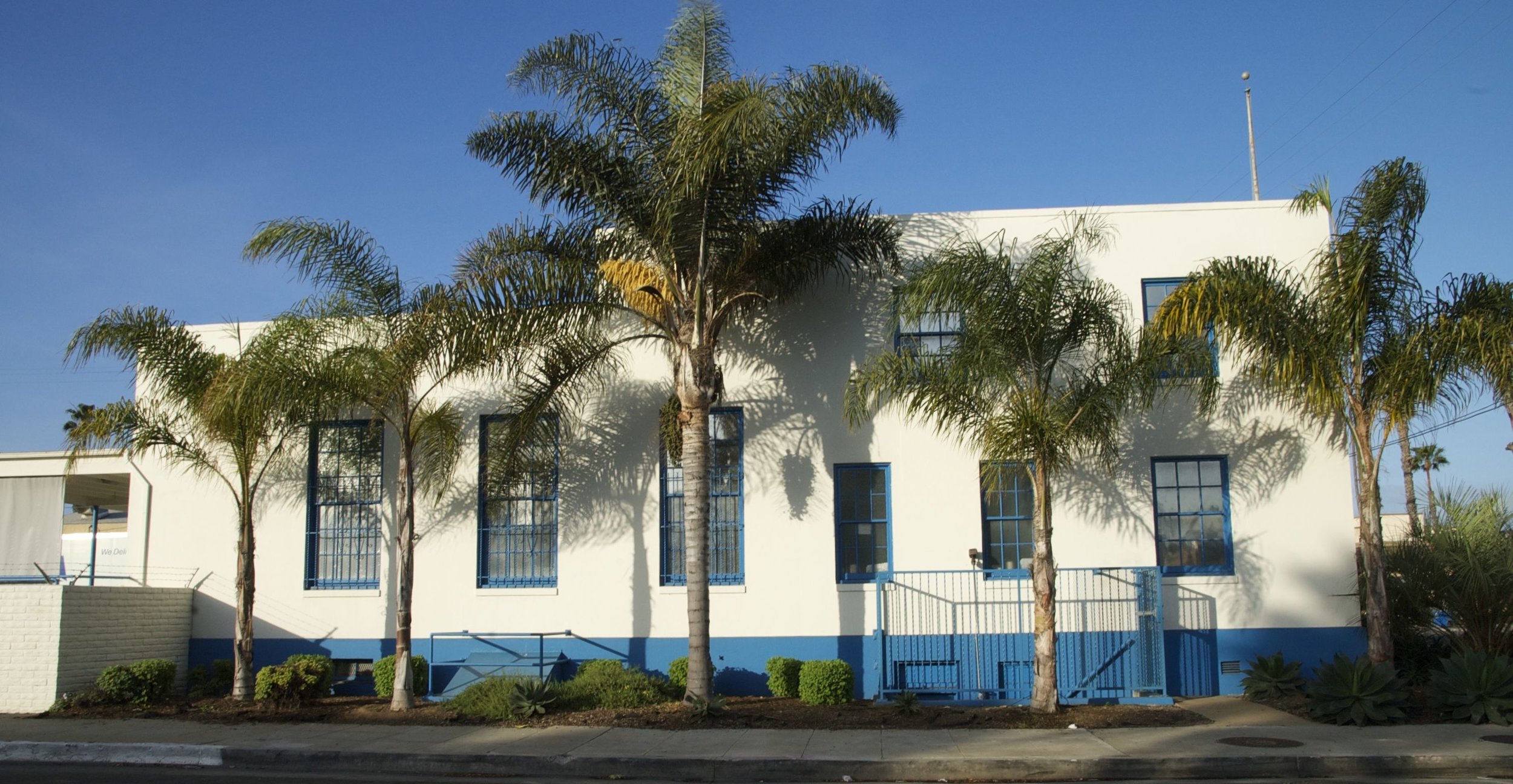
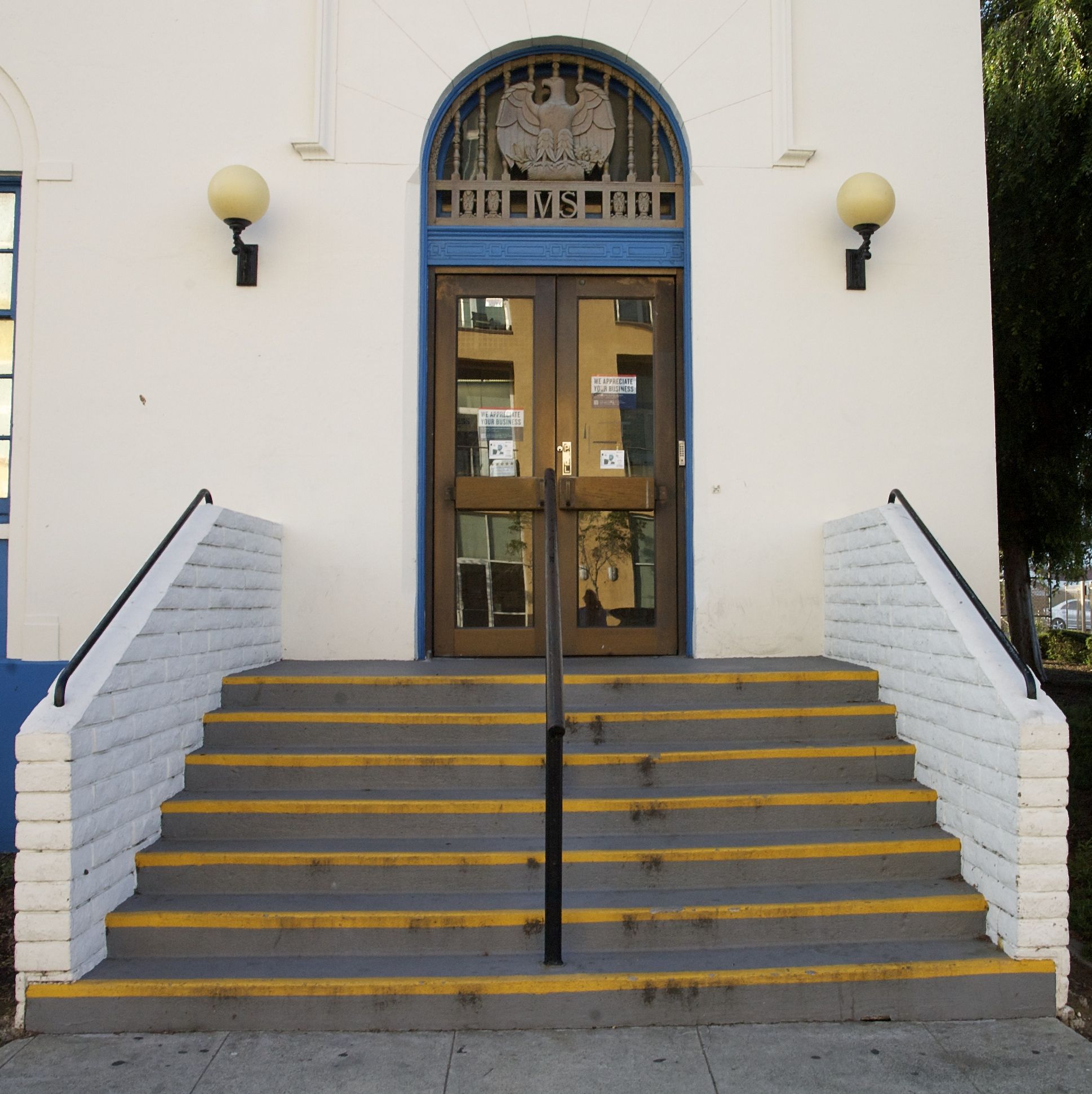
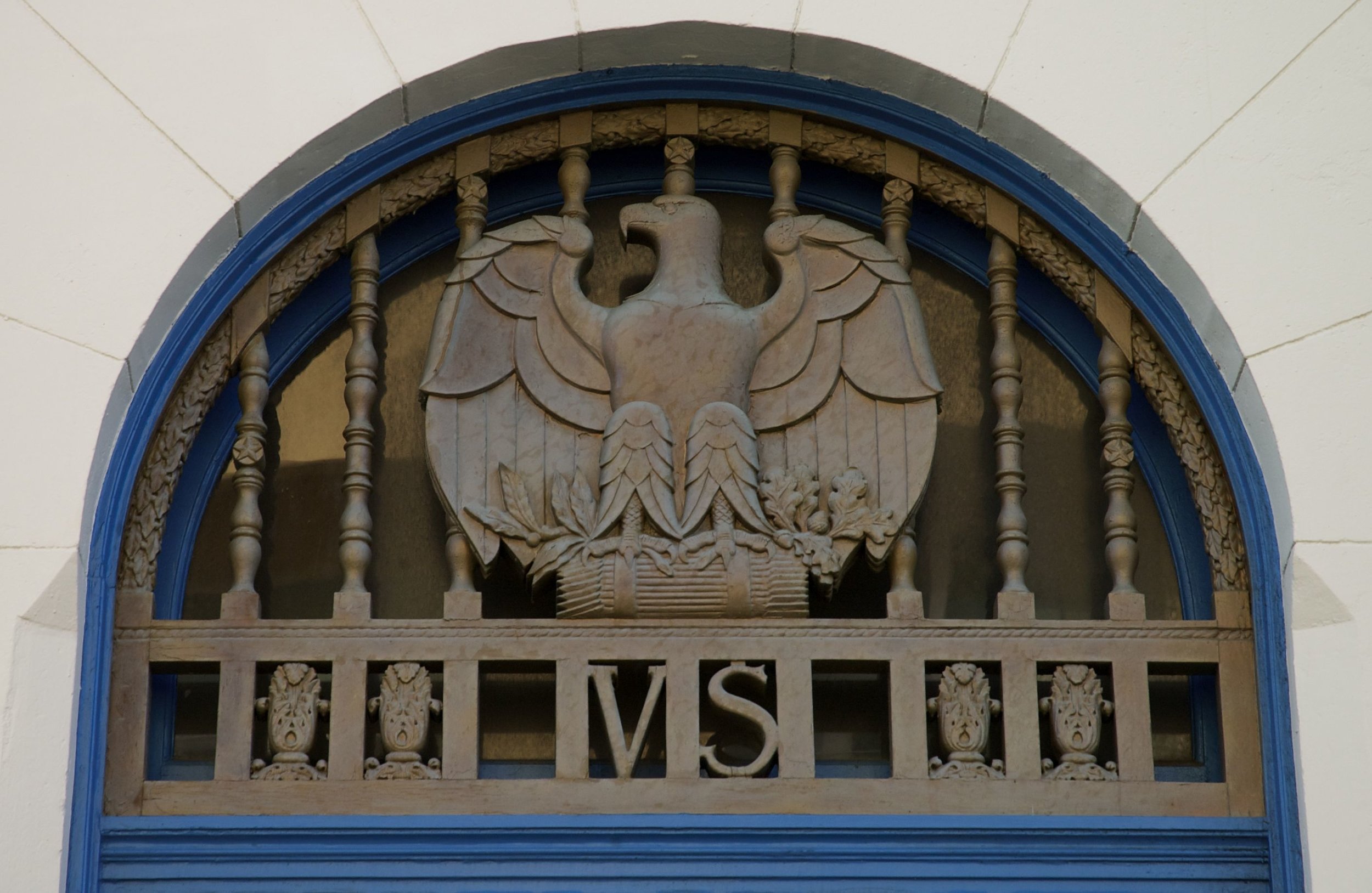
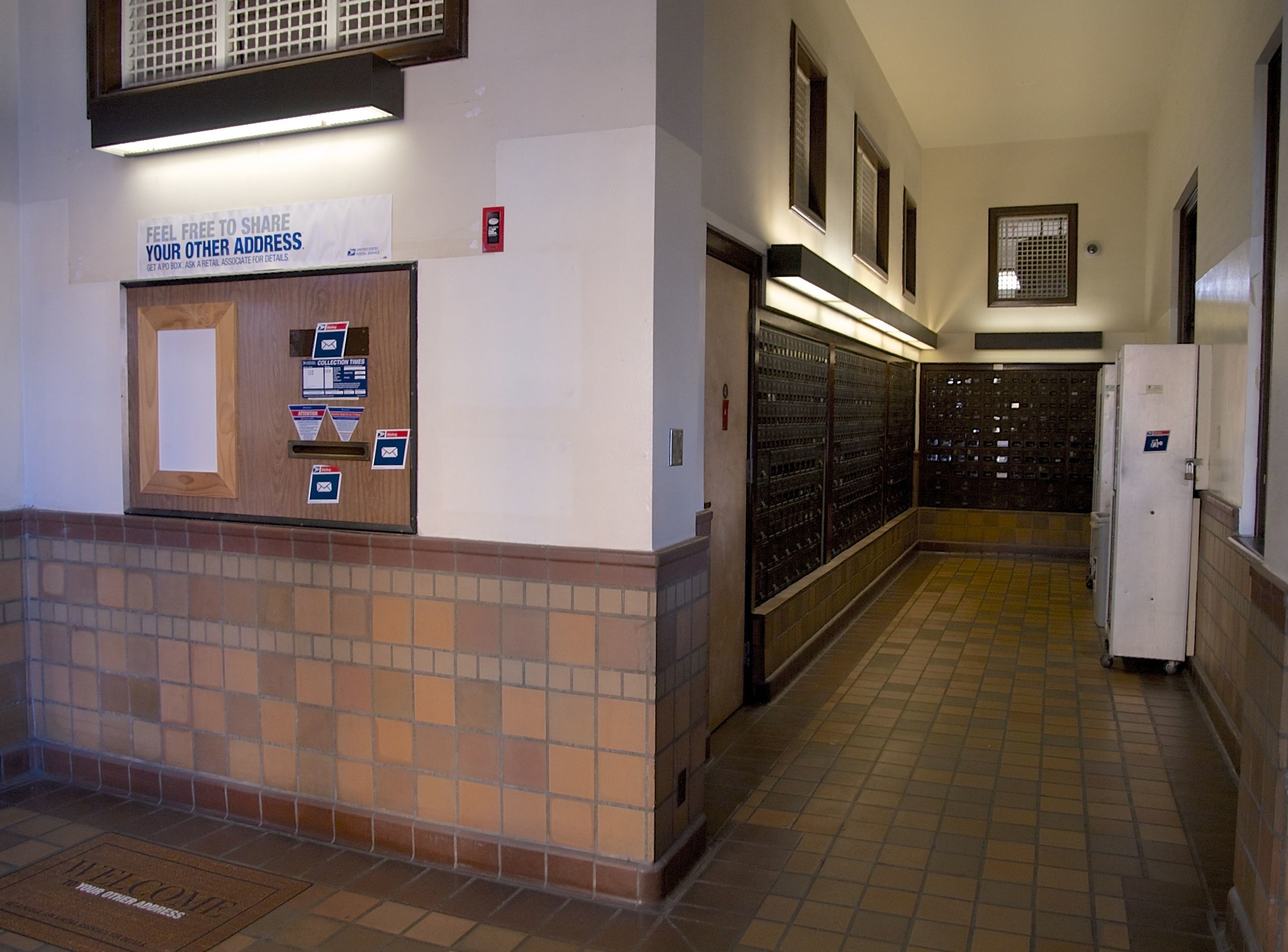
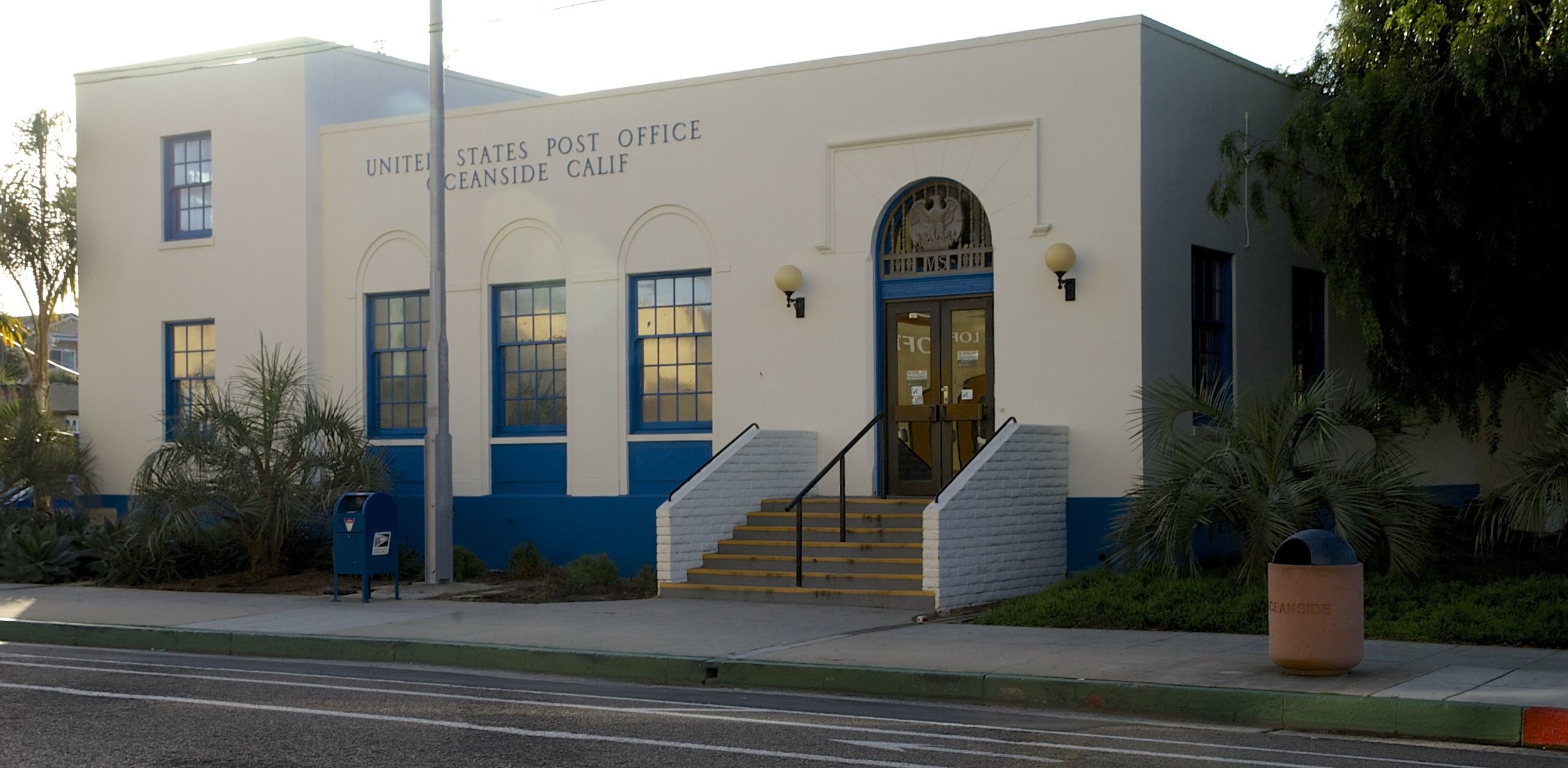
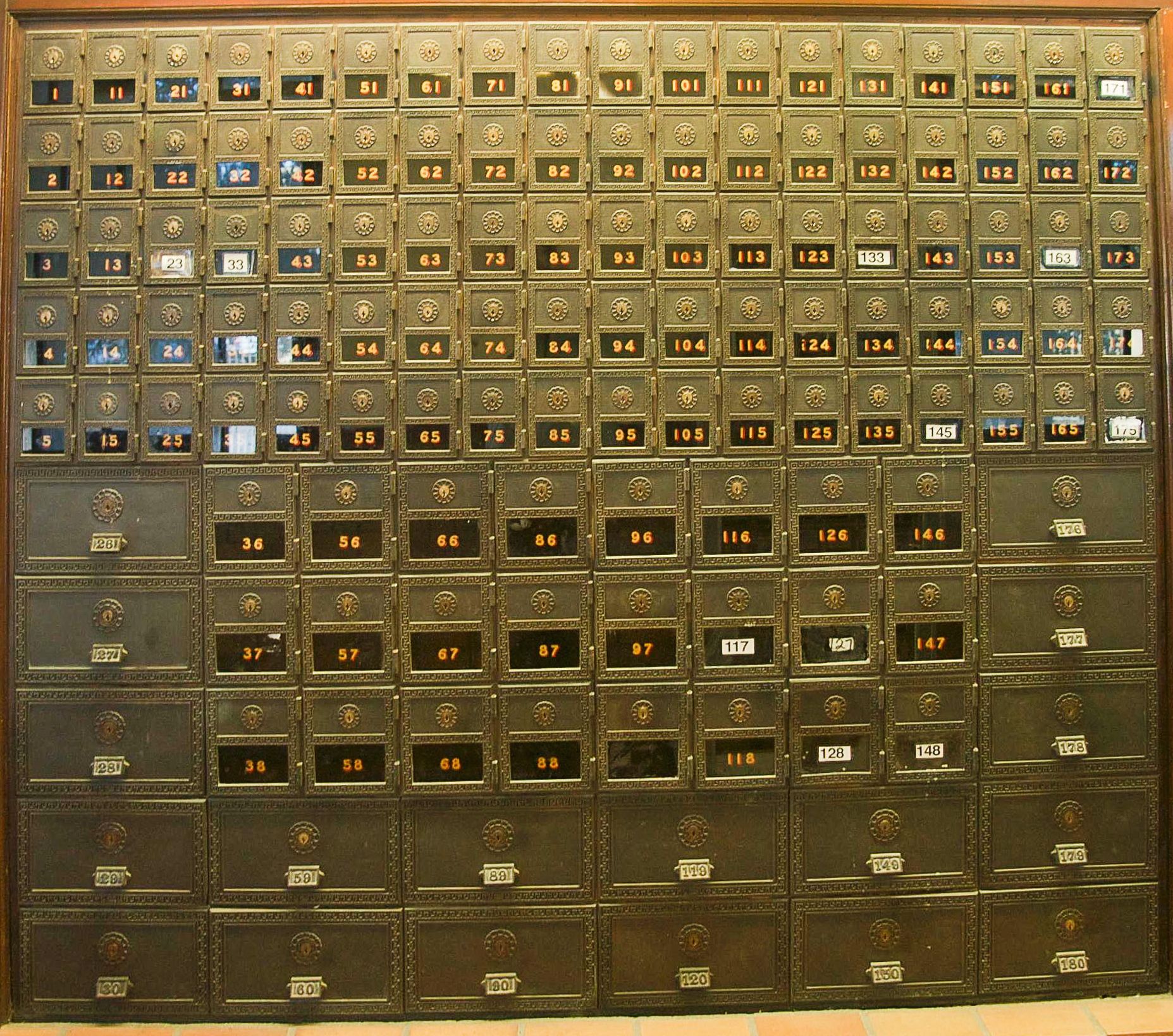
This building was Oceanside's first permanent post office. Dedicated in January of 1936, it was a WPS project, one of several in Oceanside. Louis Simon aided in the design. A mural of the San Luis Rey valley, painted by Elise Seeds (aso a WPA project) graces the interior. One other WPA project is the wooden Coat of Arms over the doorway, completed by Stuart Holmes in 1936. - from Oceanside Historical Society
Weitzel House
524 S Coast Hwy
📸 2014 © Brigid Parsons




Built in 1888, the Weitzel House in Oceanside, California is a registered historic landmark, a beautifully restored Victorian home nestled in an enchanted garden courtyard. The charm and warmth of the Weitzel House are beyond compare and provide a quiet respite from the busy world. - from Hill Street Cafe (2014)
101 Cafe
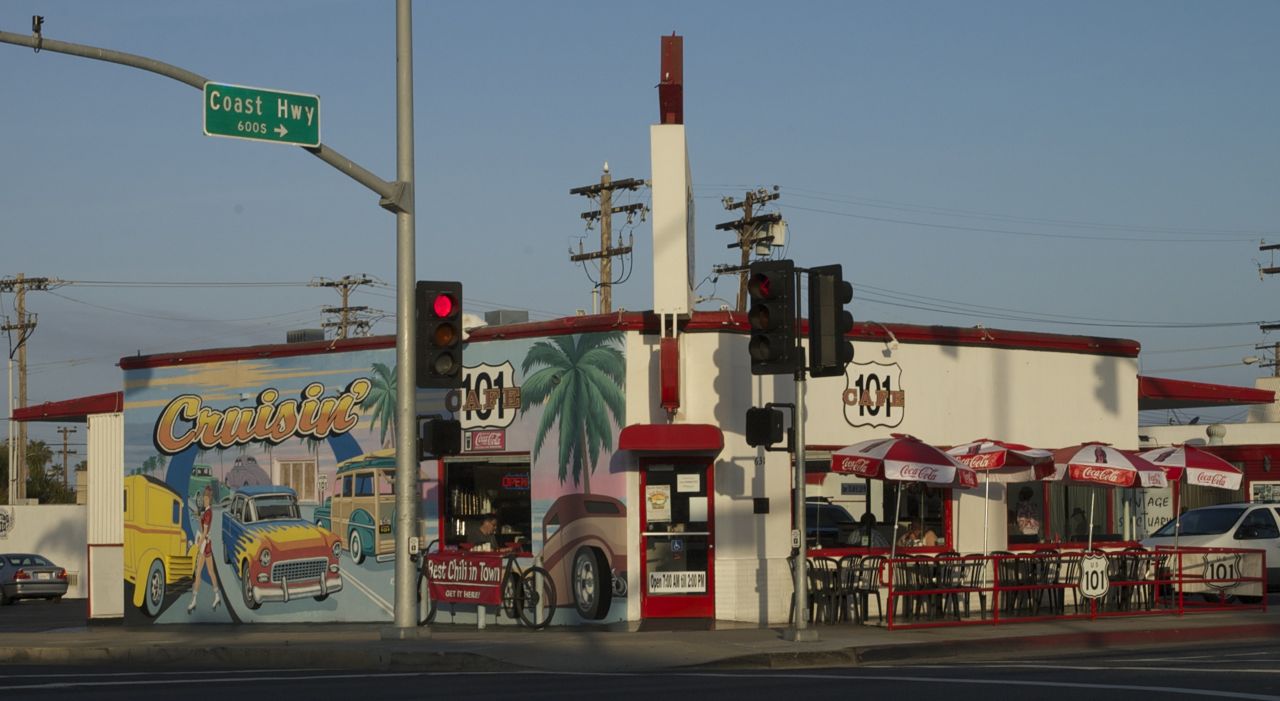
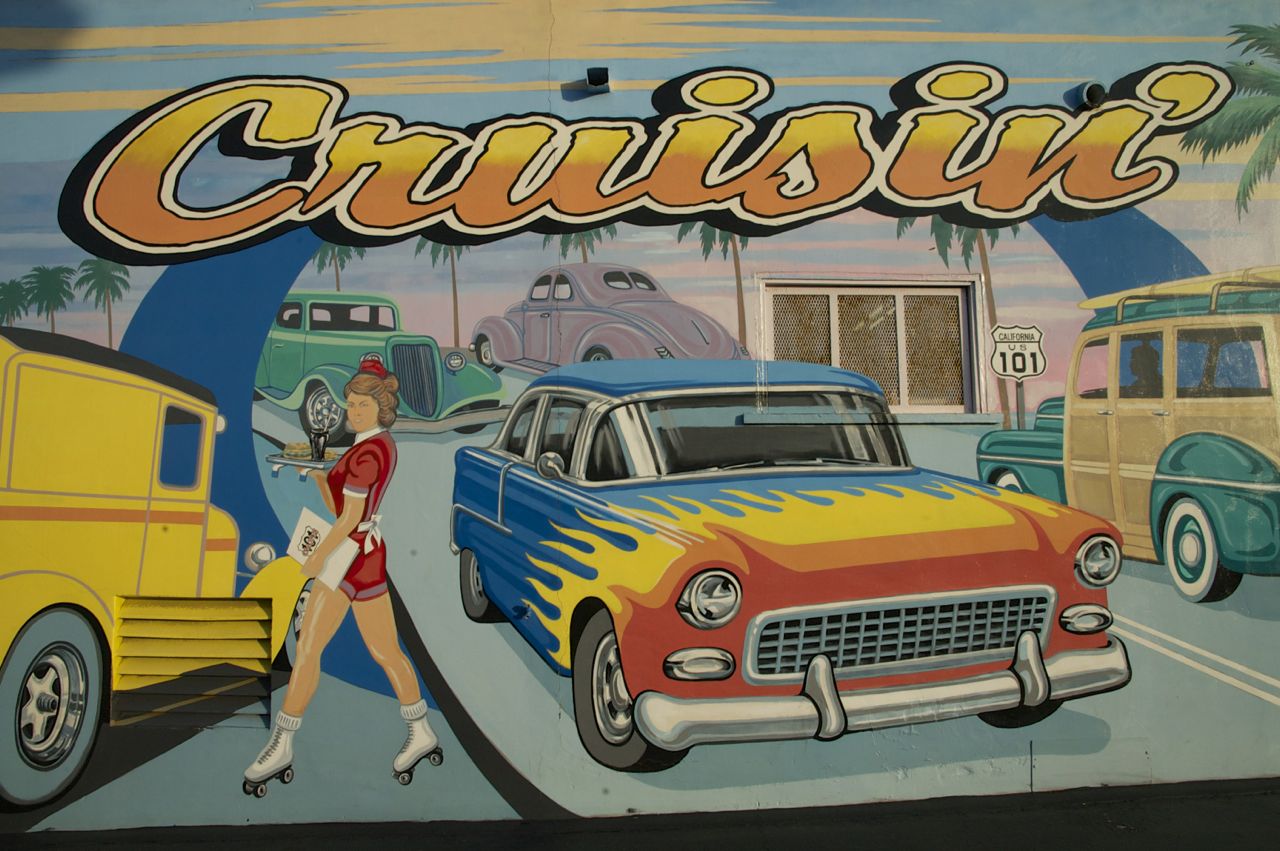
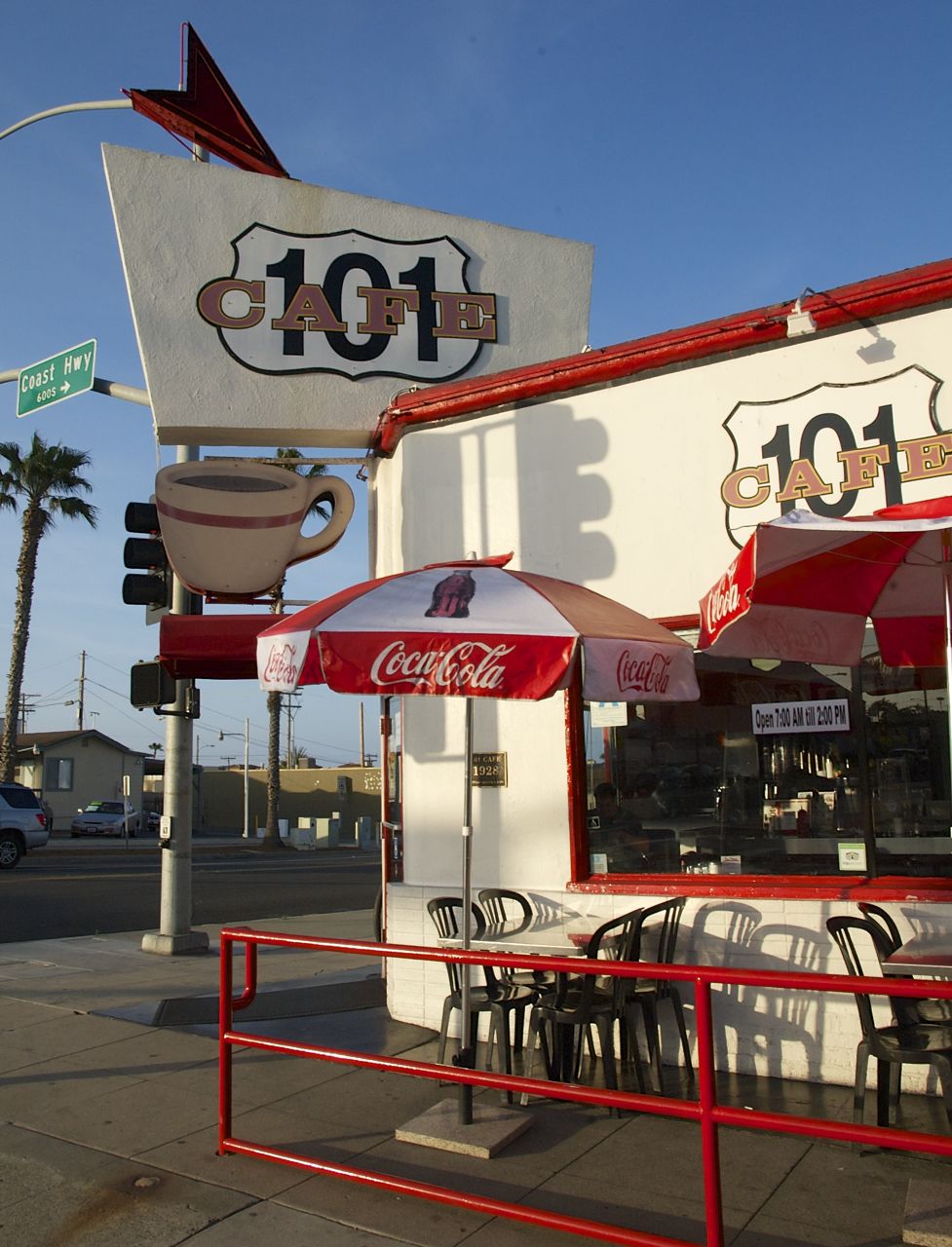
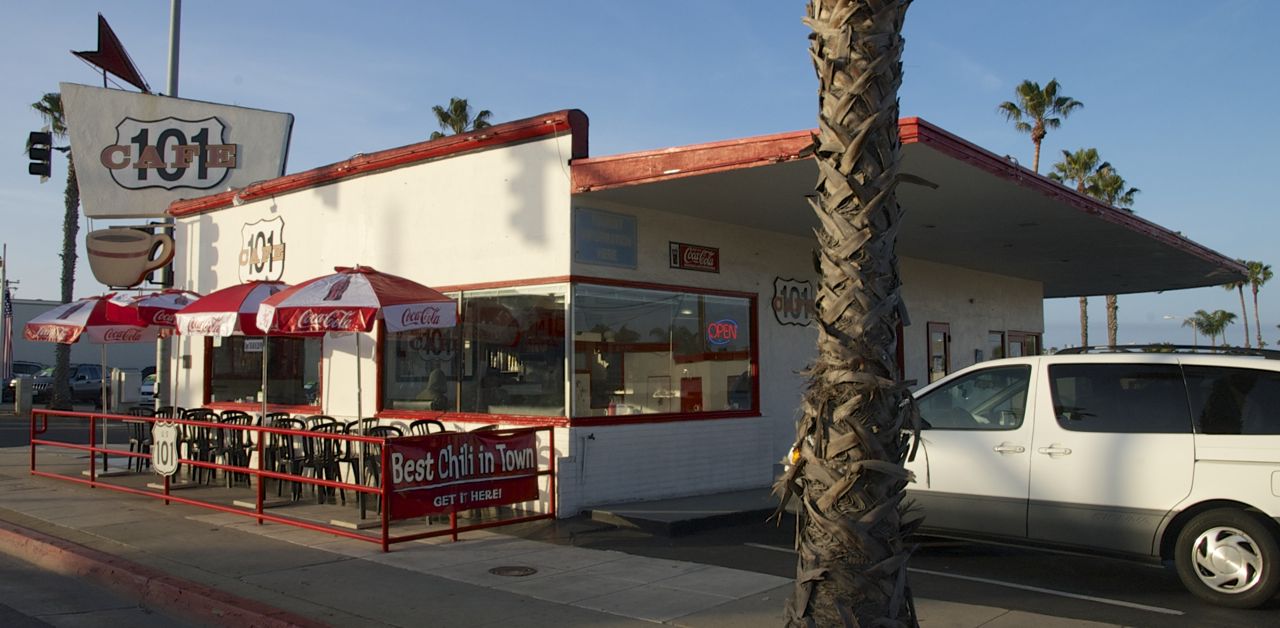
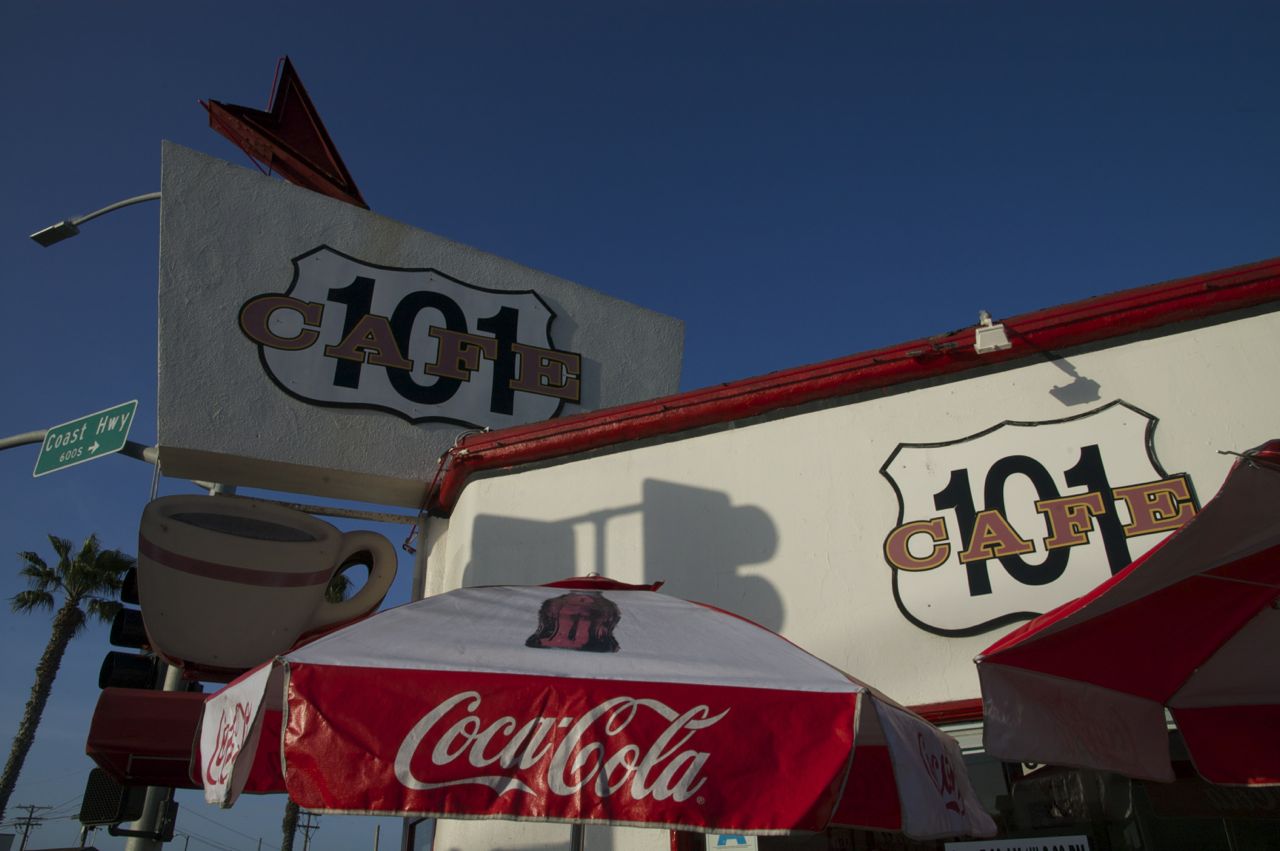
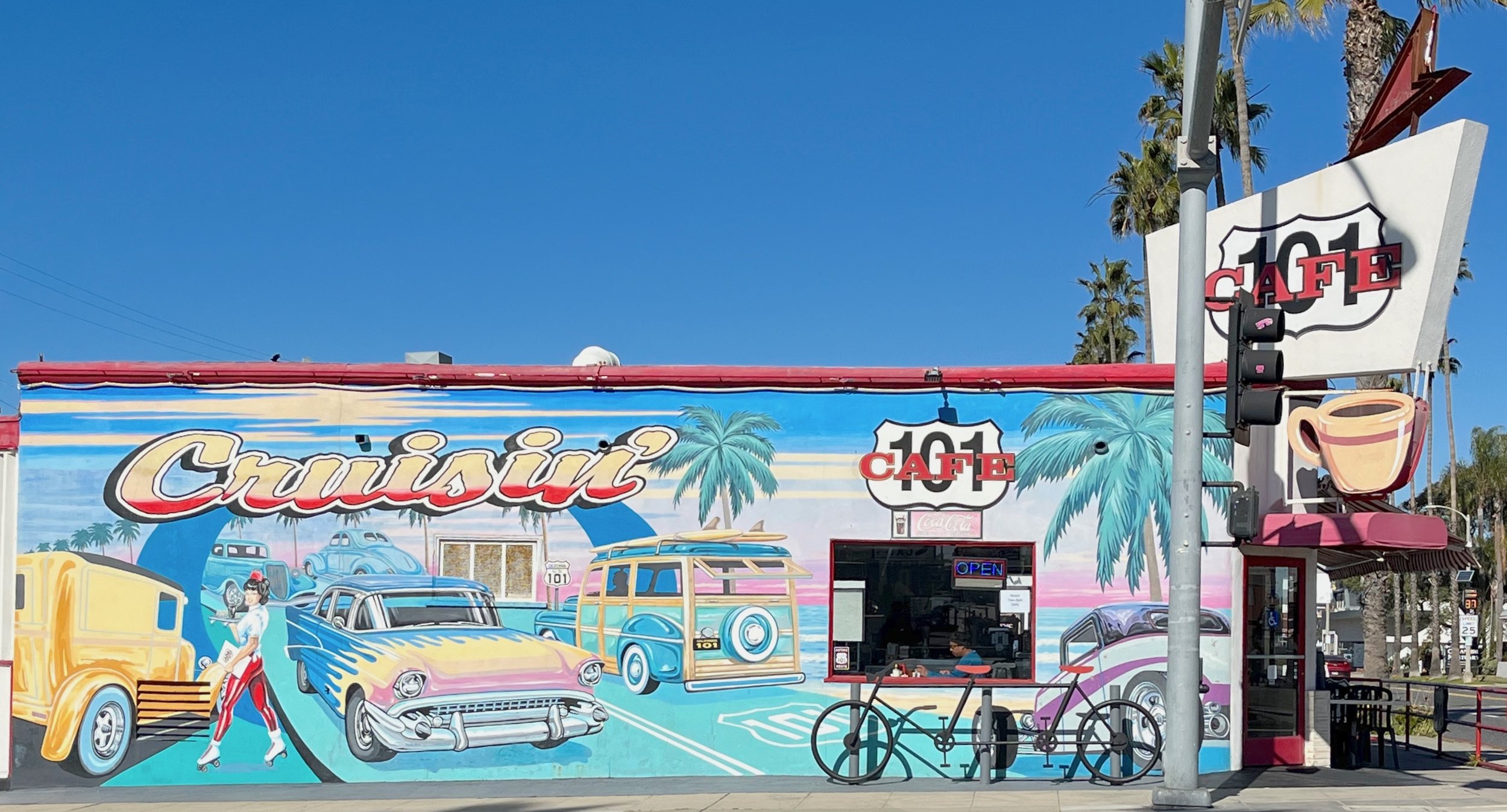
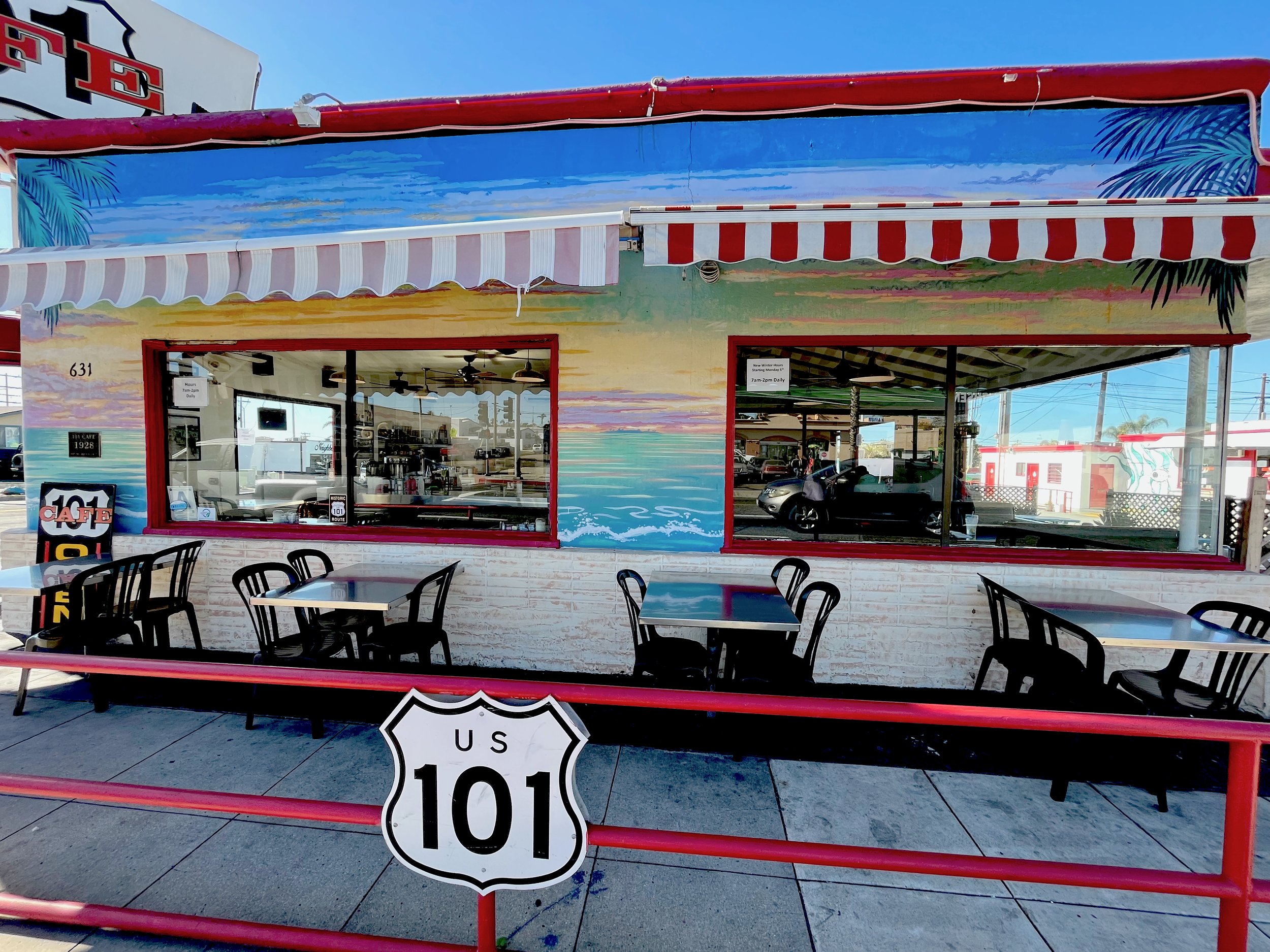
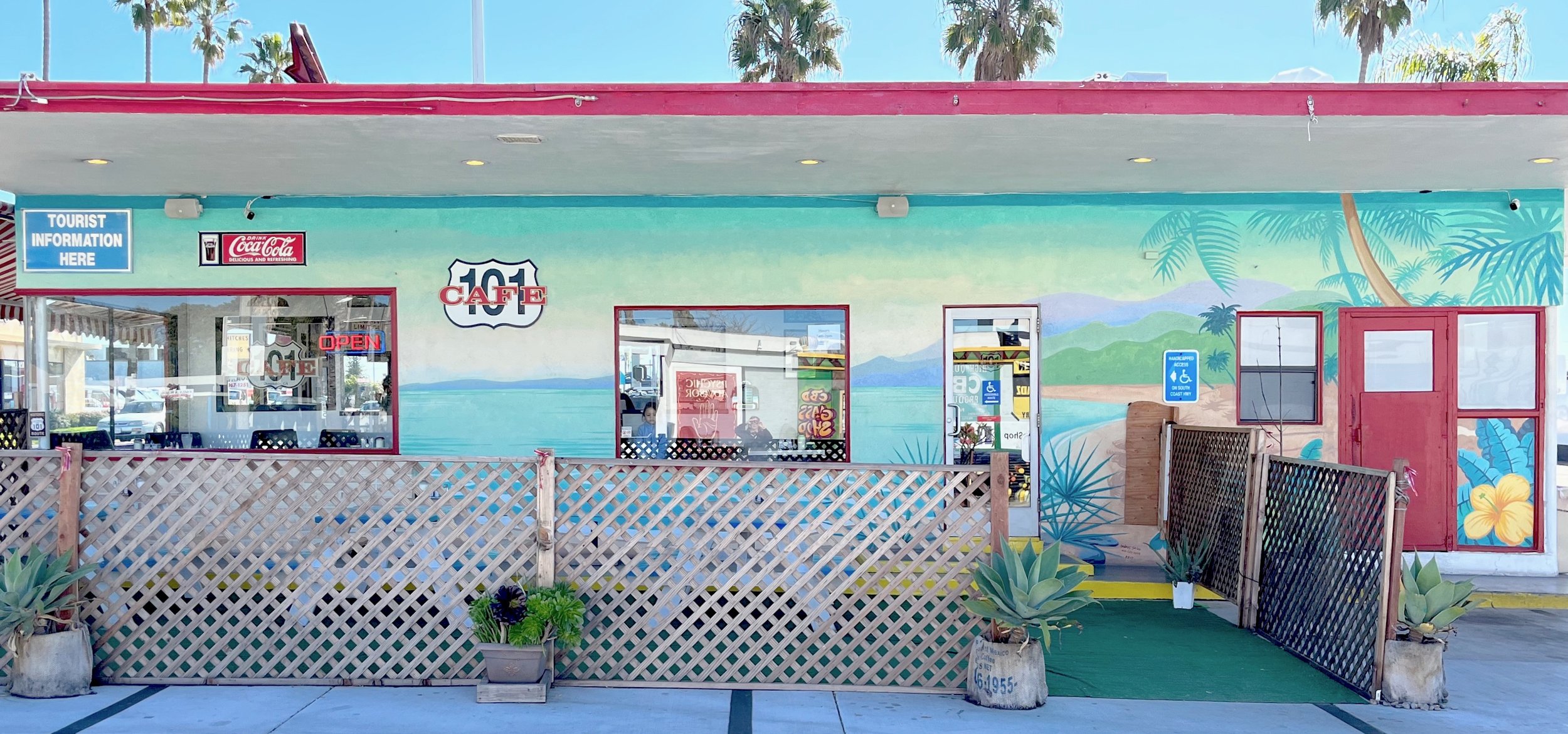
The 101 Cafe began its life as a small 20-seat diner in 1928, opened by the Ekegren family. It was just the small dining room where the counters are now. The Cafe was named for the old highway which it fronted Highway 101. The Greyhound bus stopped right in front until the 1940's when a bus station was located downtown. The diner enjoyed the traffic generated by Highway 101, which was the main access from Los Angeles to San Diego until 1953 when Highway 101 was relocated to the present location of Interstate 5. This changed the nature of the business.
During this time a local businessman had the foresight to adapt to the change. Lucky Lackey, the businessman, added the overhang around the building as it now exists. He found a successful restaurateur in John "Bushie" Graham to operate the latest in eateries, a drive-in called "Grahams" and ran it quite successfully until the early 1970's. Graham also ran two other drive-ins in Oceanside, located at Seventh and Hill Streets and Clementine and Mission Avenue. Grahams' reputation as a hot spot for local teenagers spread far and wide. When the new drive-throughs like McDonald's began to rise to prominence, drive-ins no longer prospered. Graham adapted by selling to-go items and changed the format to a coffee shop. About 10 years later, a new owner changed the name to Randy's Coffee Shop. - from 101 Cafe
Graves House aka Top Gun House
1887, restored 2020
2014 images below


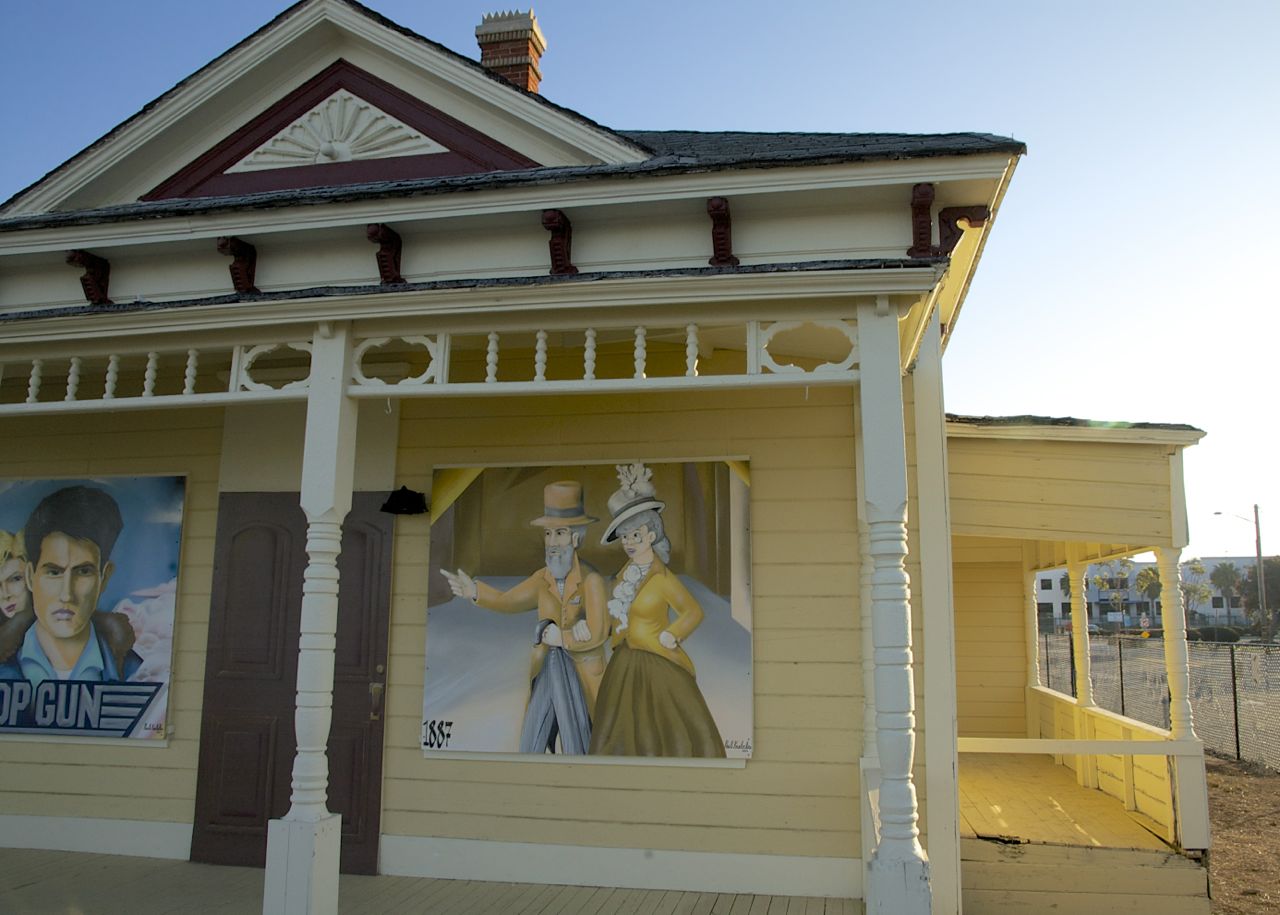
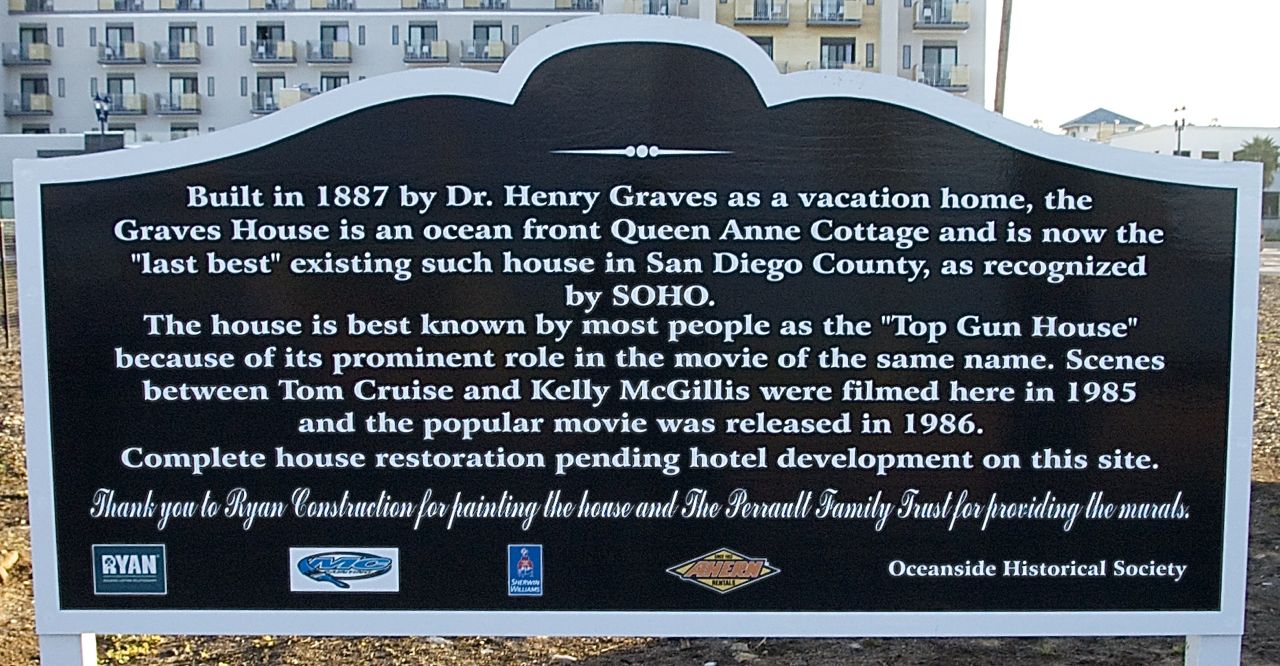
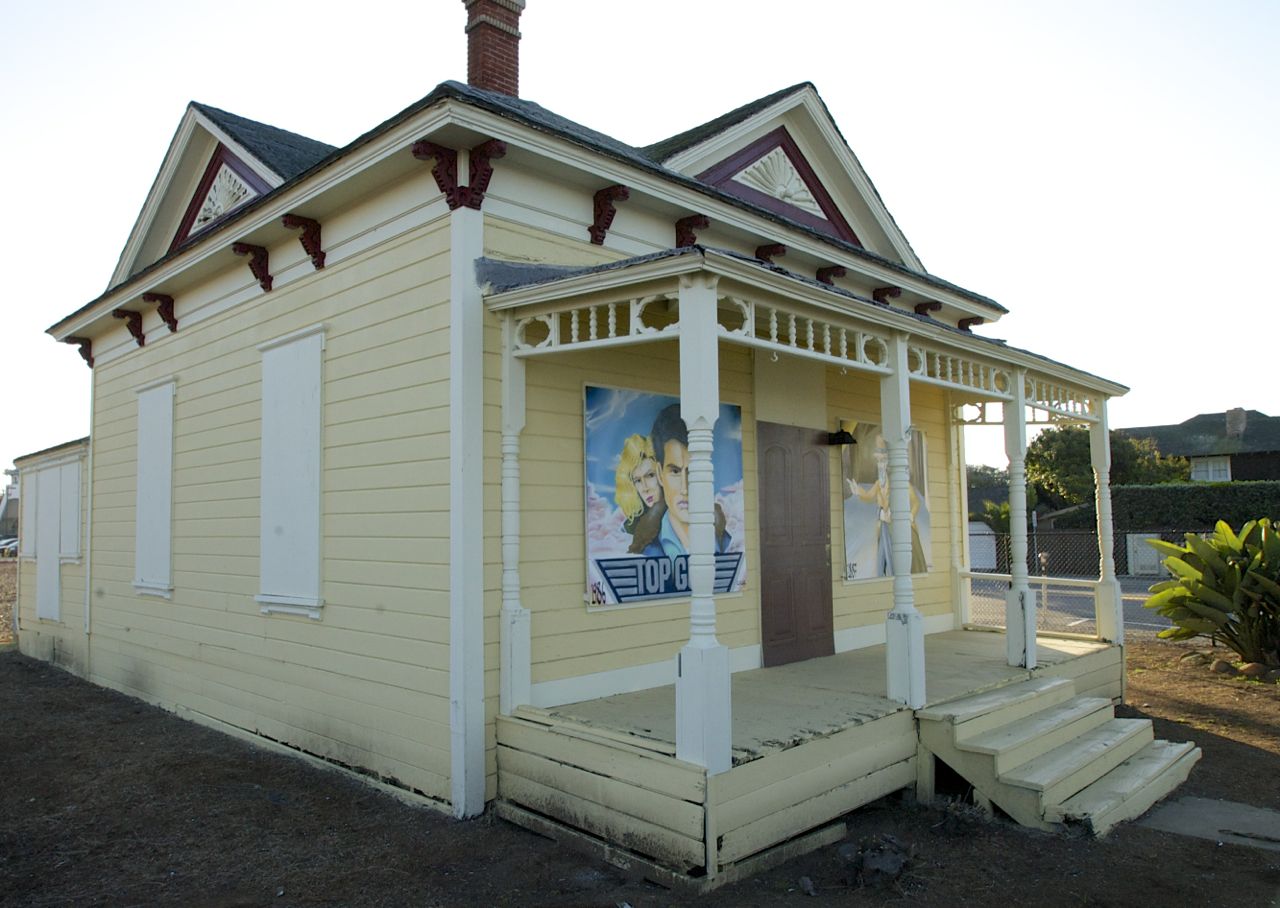
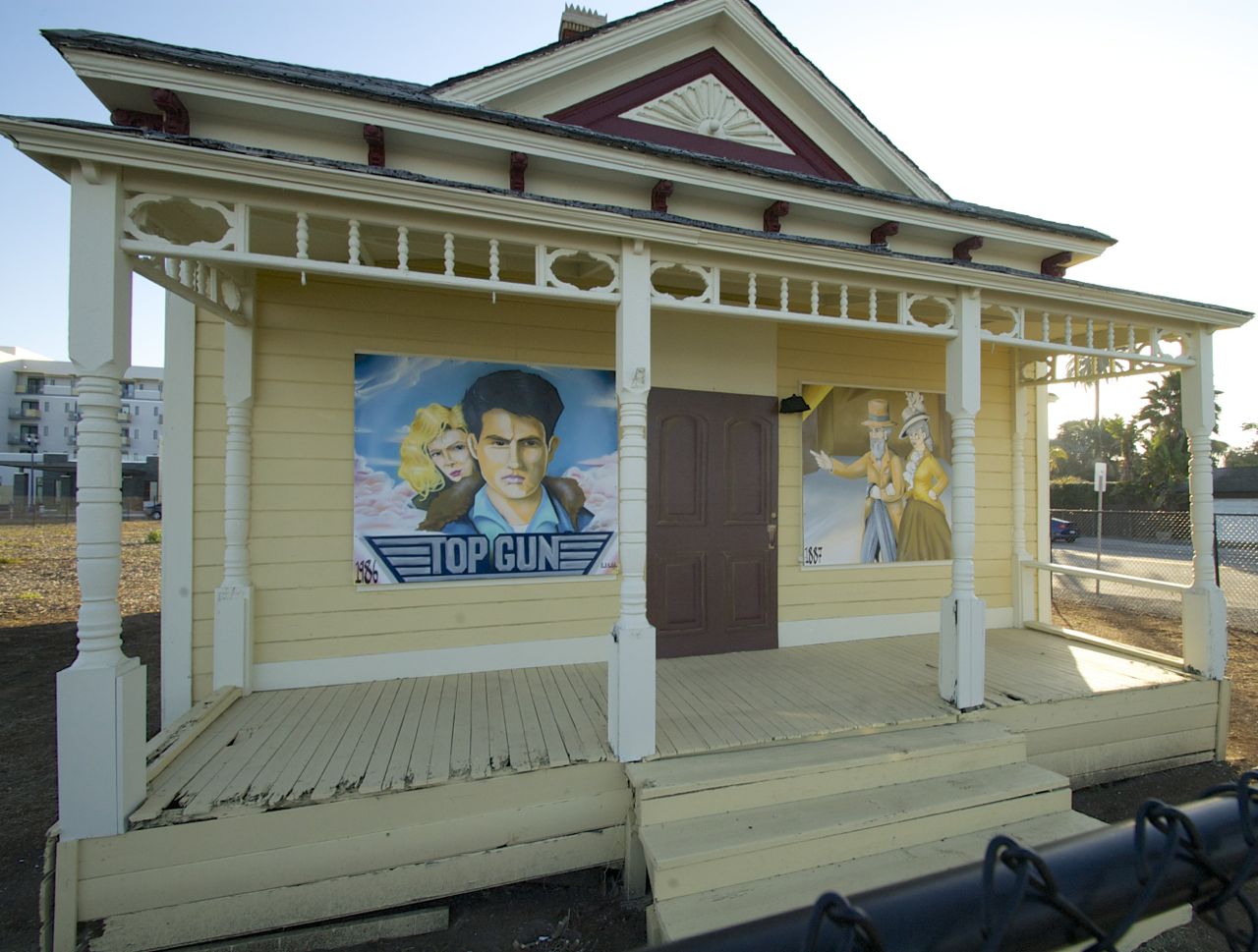
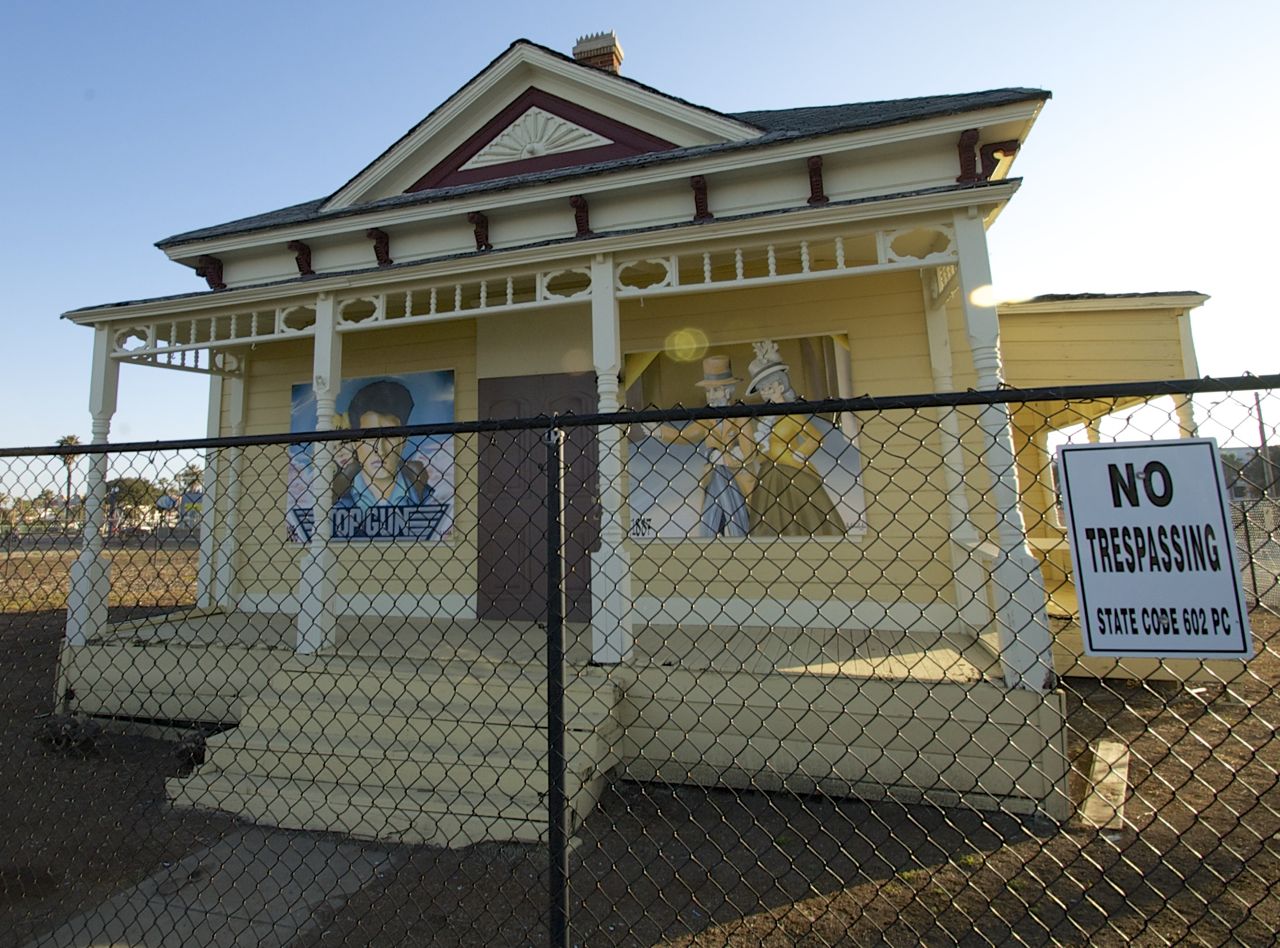
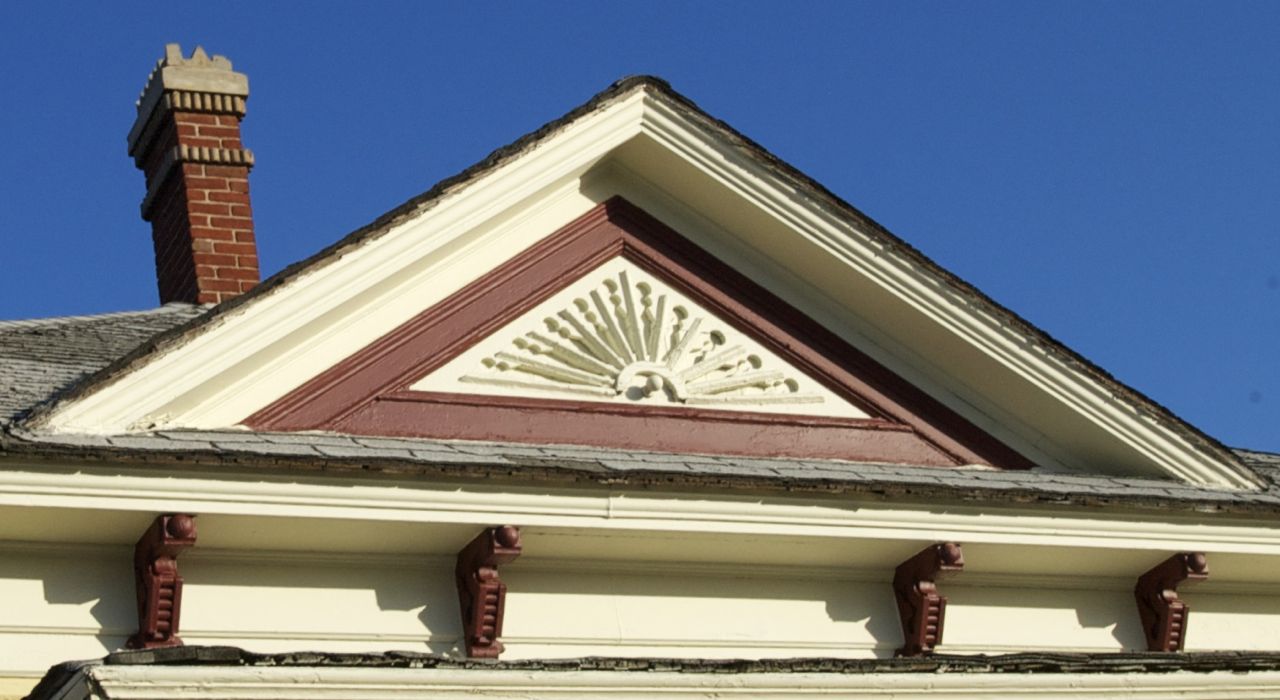
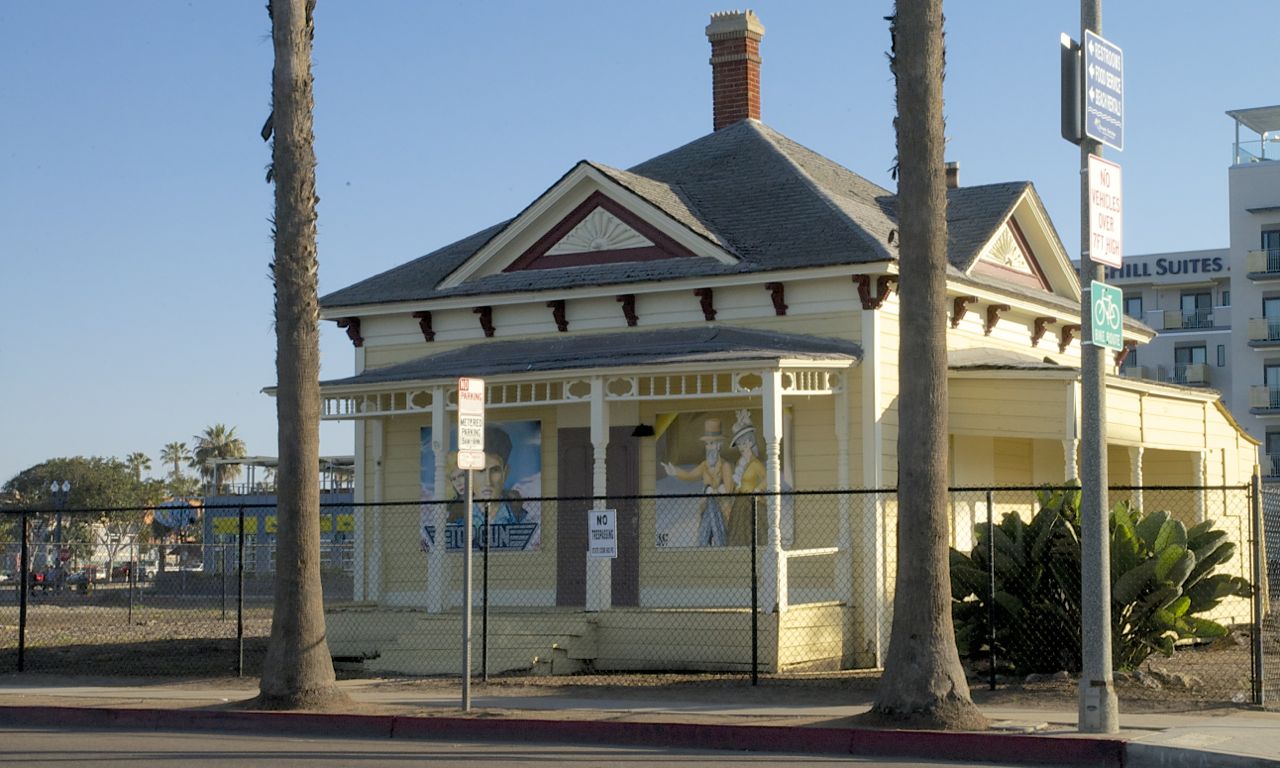
Constructed in 1887 in the Folk Victorian style, the Graves House is a Queen Anne Cottage, built for Henry Graves as a vacation house. The house was featured in the 1986 film Top Gun as Charlie's house and has since been known to locals as the “Top Gun Cottage.”
In January 2008, a private developer submitted a proposal to re-develop the oceanfront block on which the Graves House and three other residential properties were located. As a result of the project, the Graves House was restored and relocated 2 blocks away in 2021 nestled in the Mission Pacific Hotel.
St Mary, Star of the Sea Catholic Church

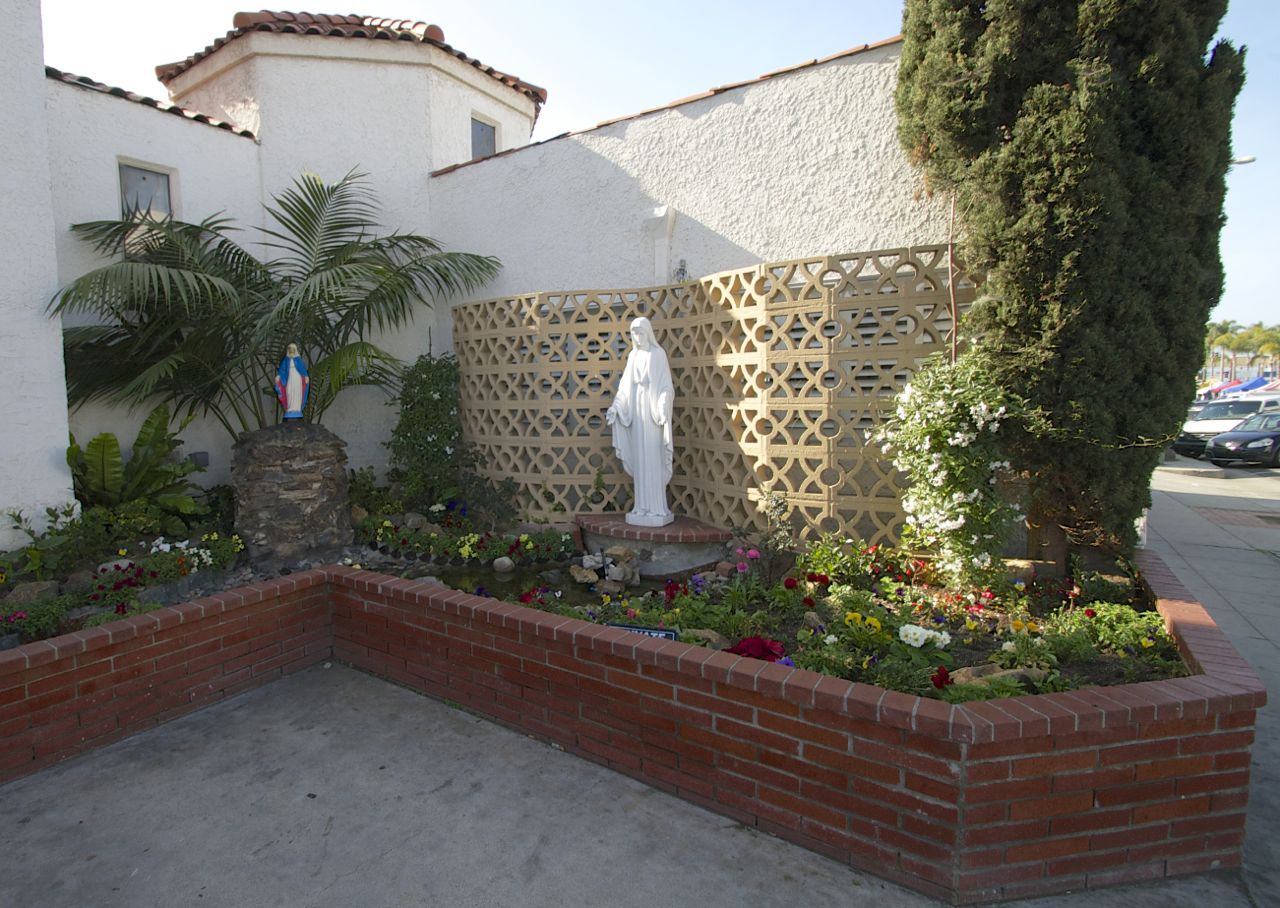
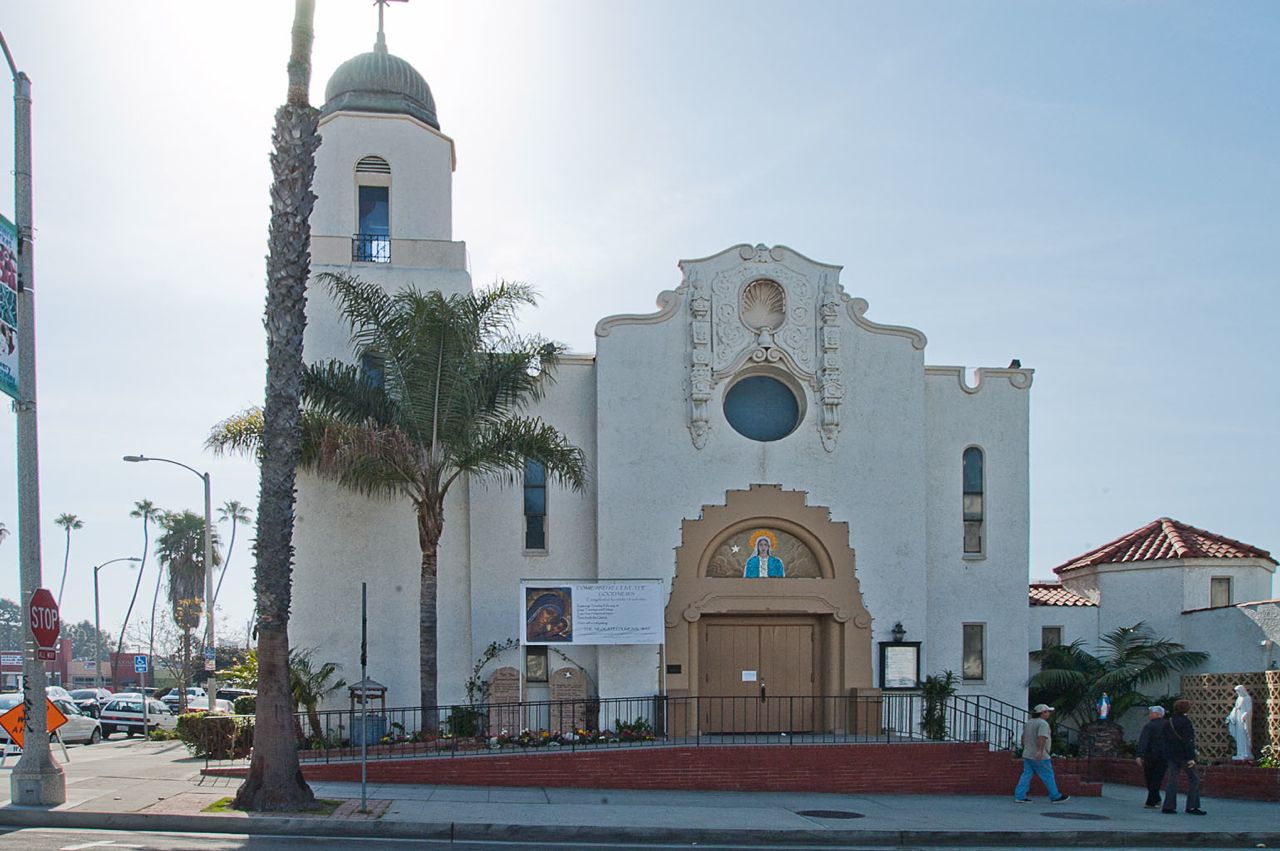

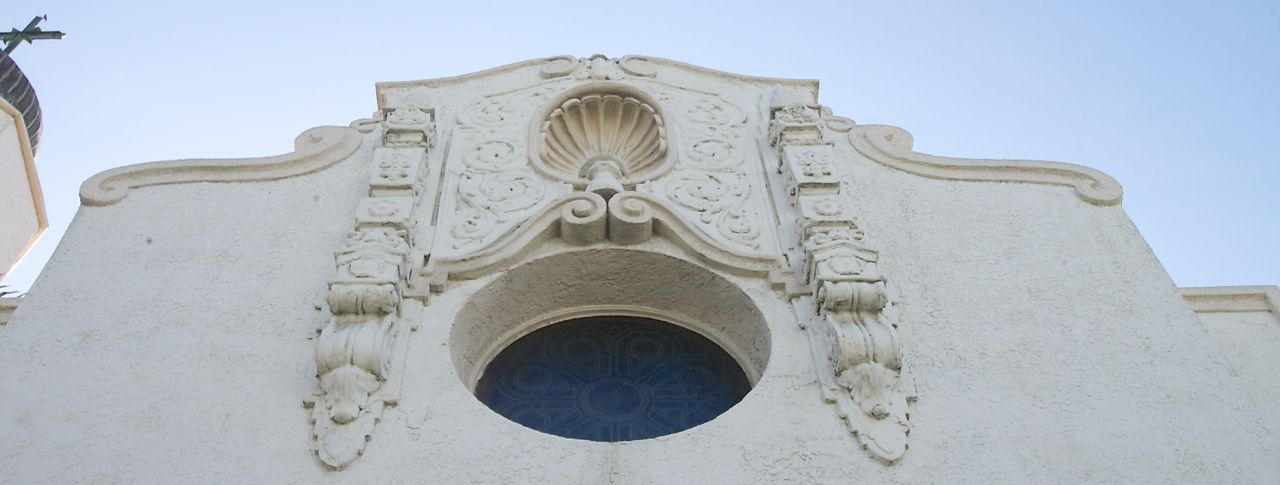

This building is a great example of Mission revival architecture. Constructed in 1927, it replaced an 1893 church that was moved and restored at 1510 Lemon St. - from Oceanside Historical Society
Walkway Under Train Tracks
Pier View Way
📸 2014 © Brigid Parsons
Just under the train bridge, I've noticed musicians recording there - apparently the acoustics are great!
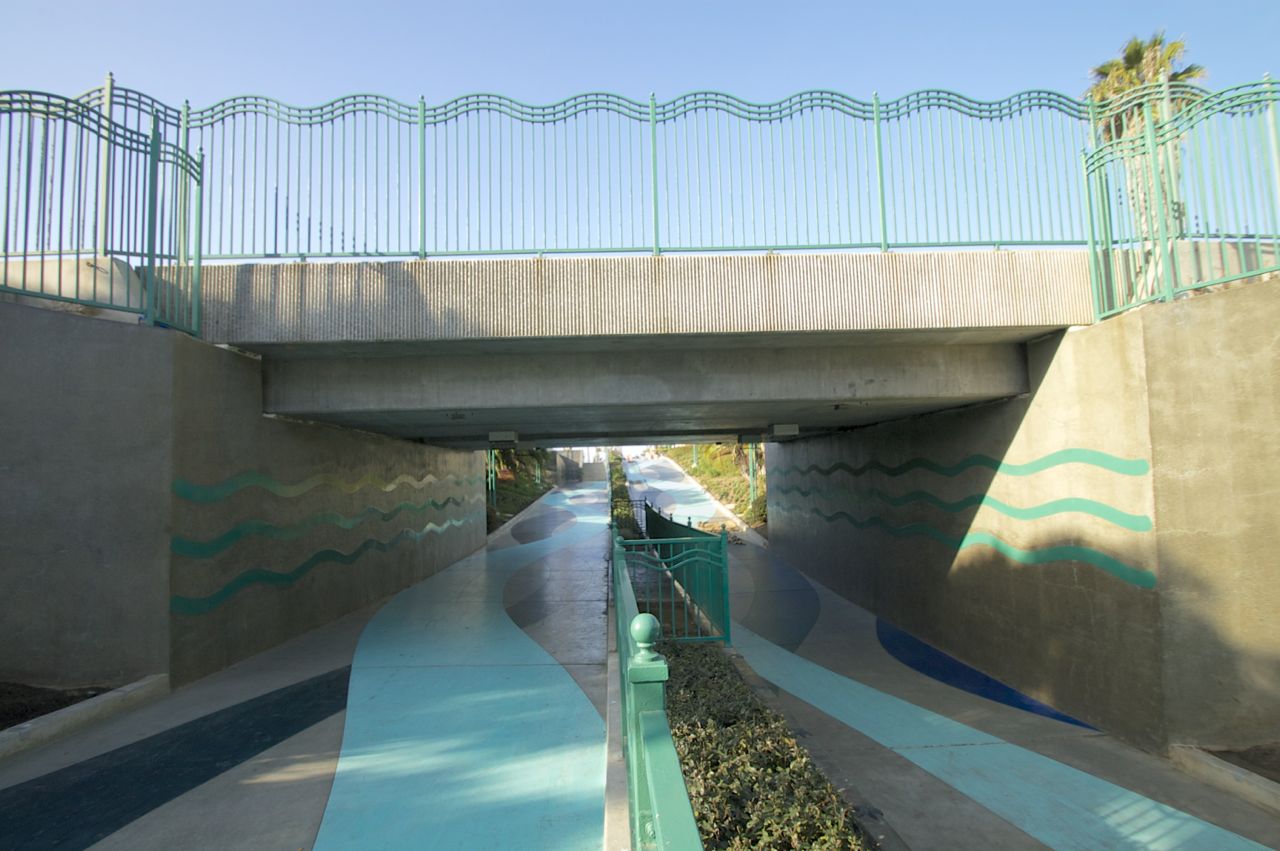
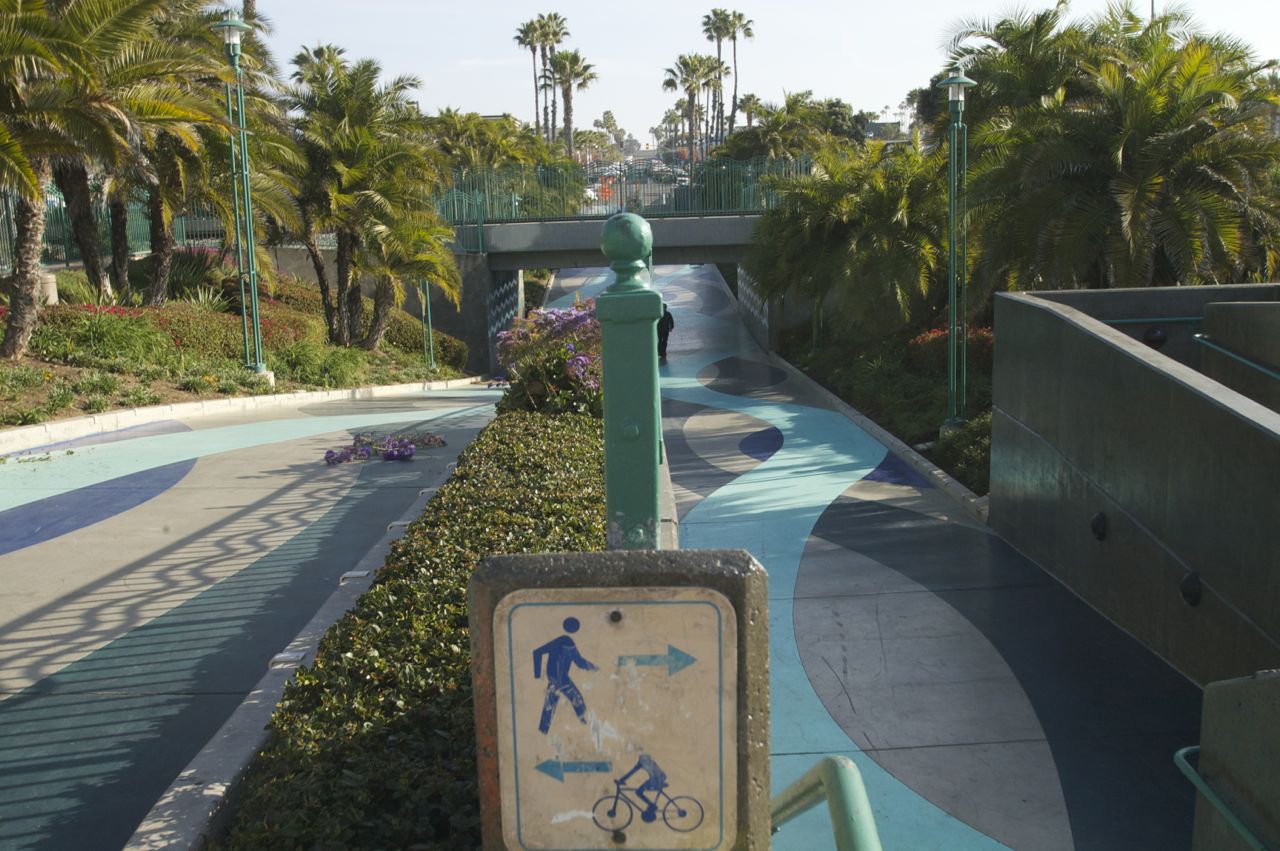
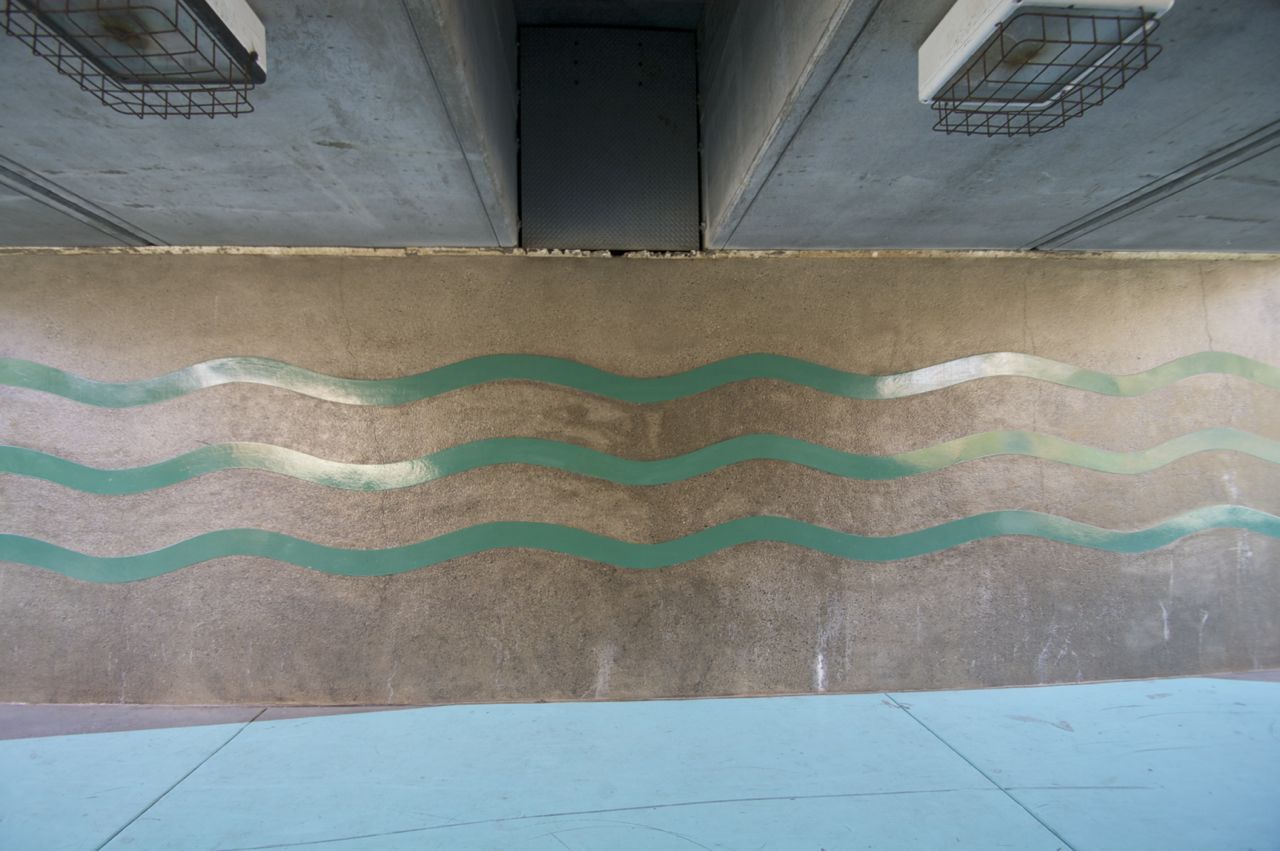
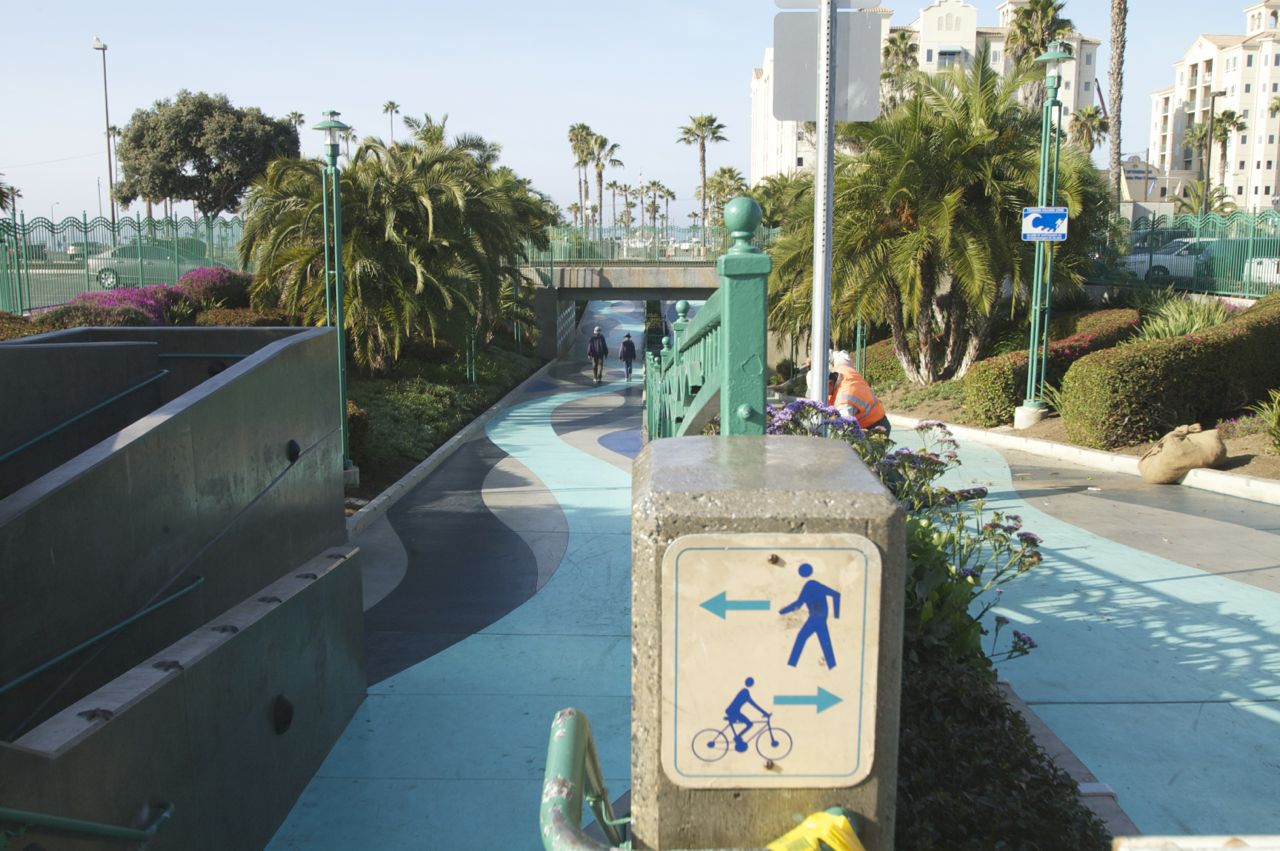
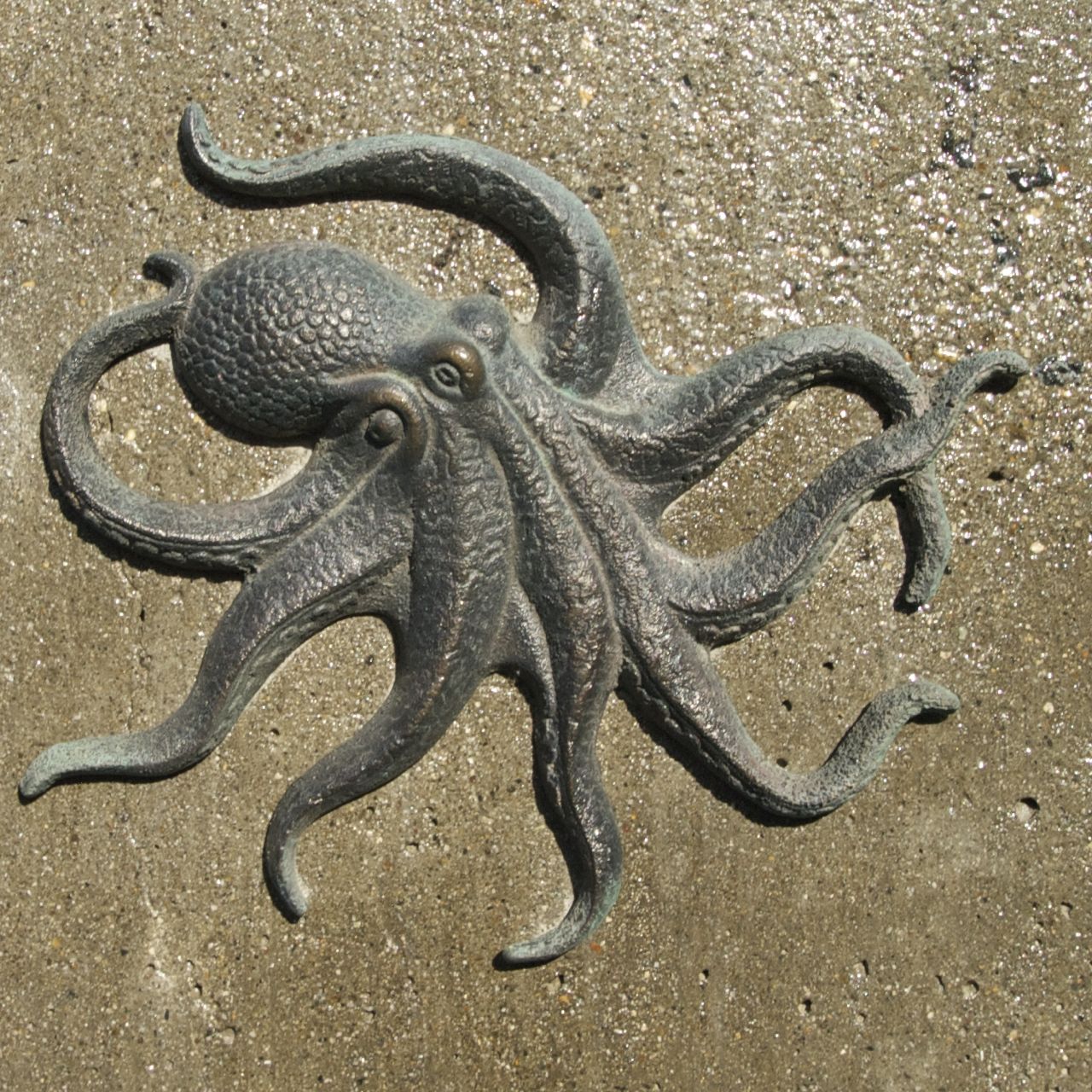
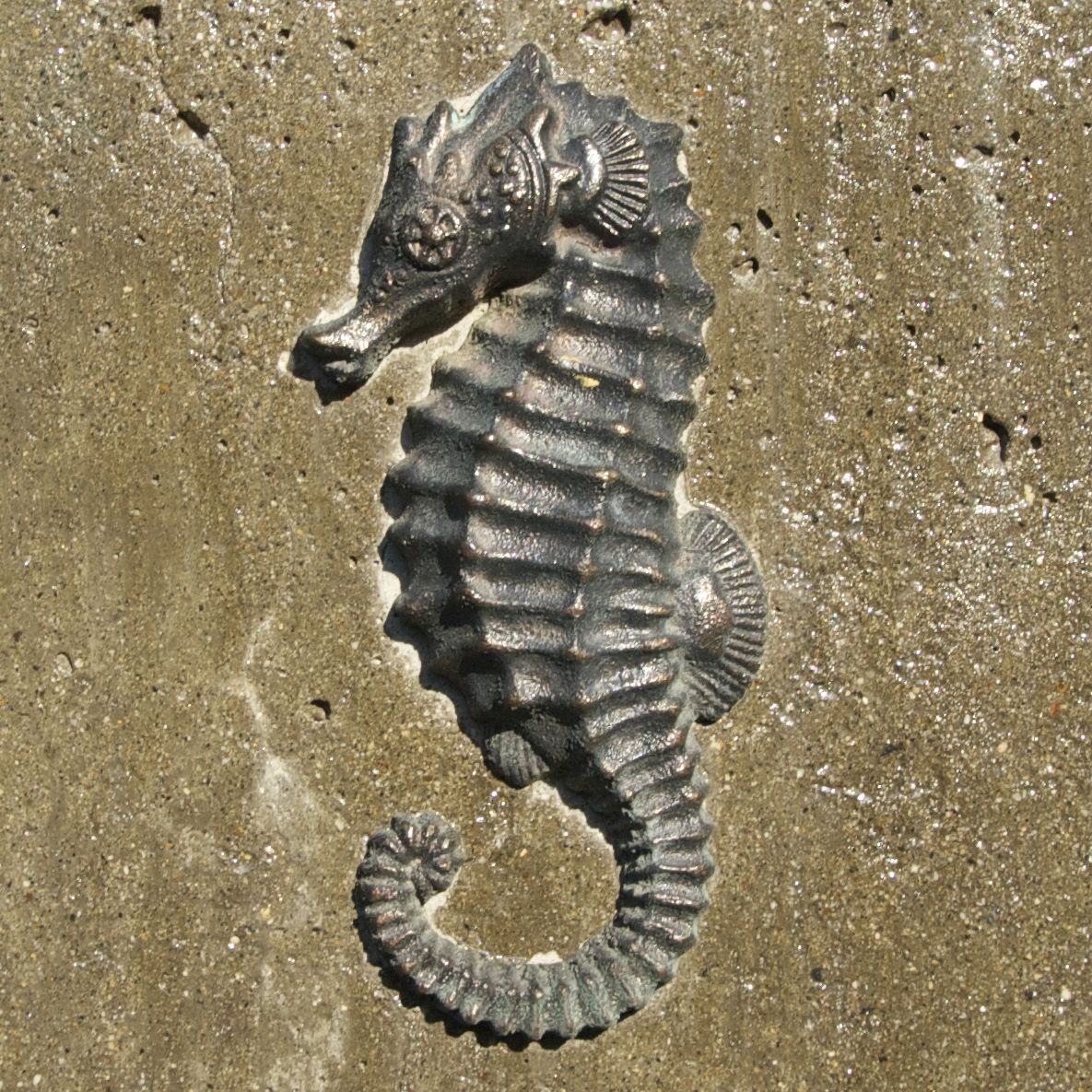
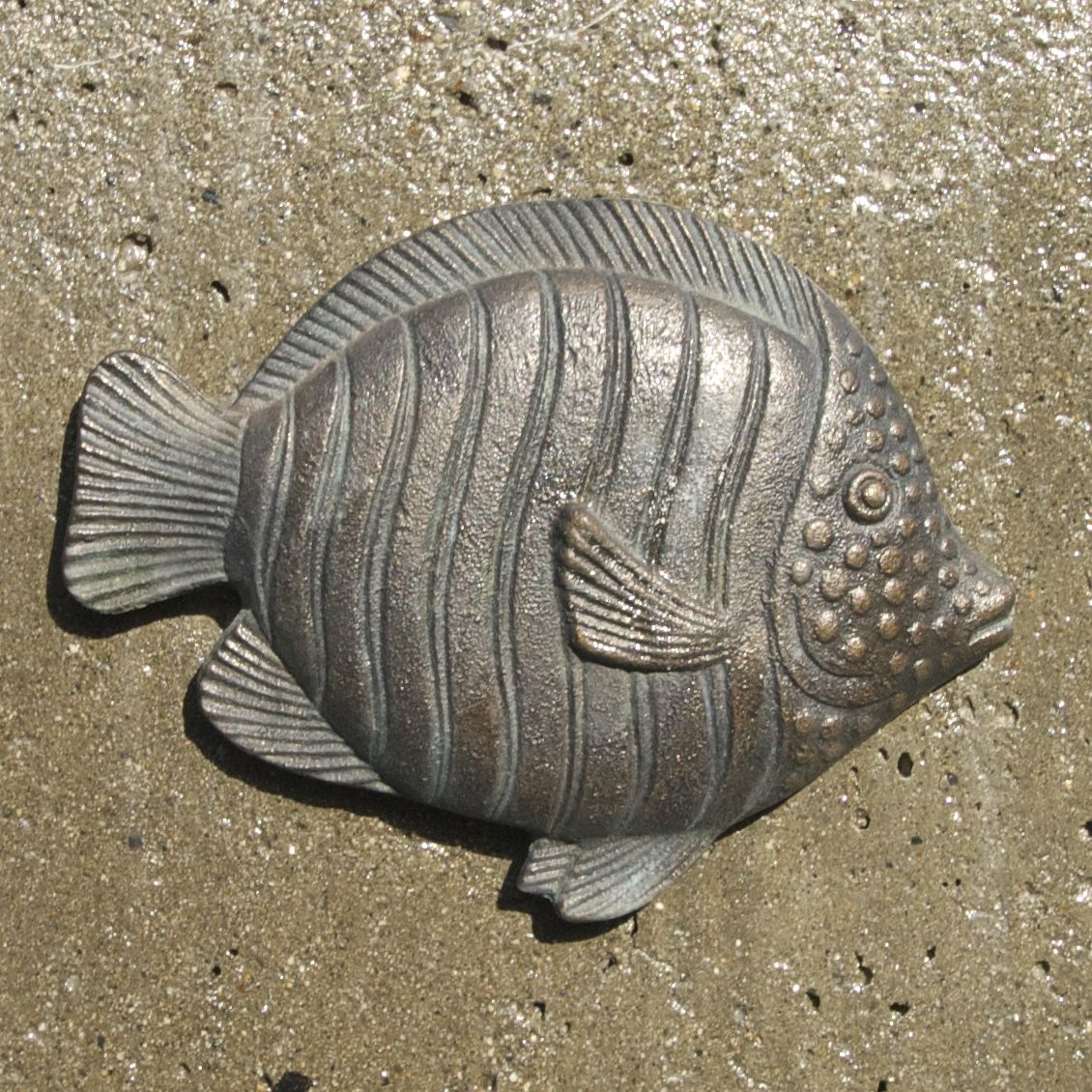
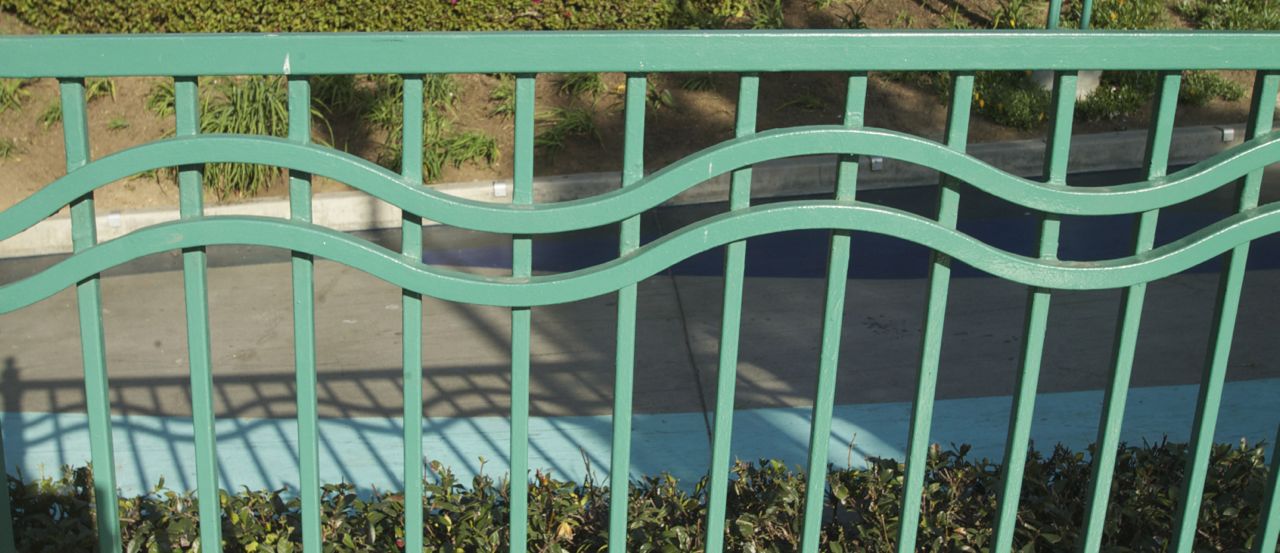
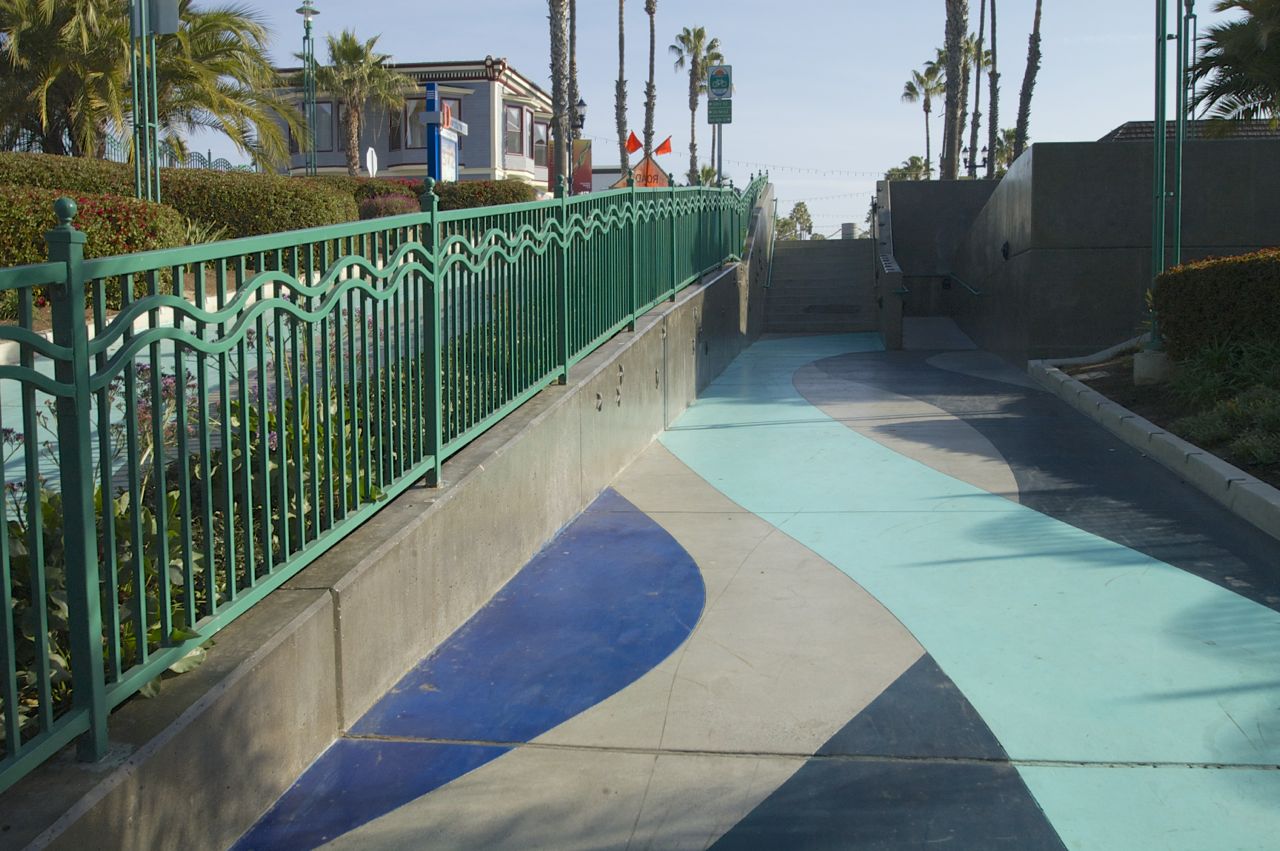
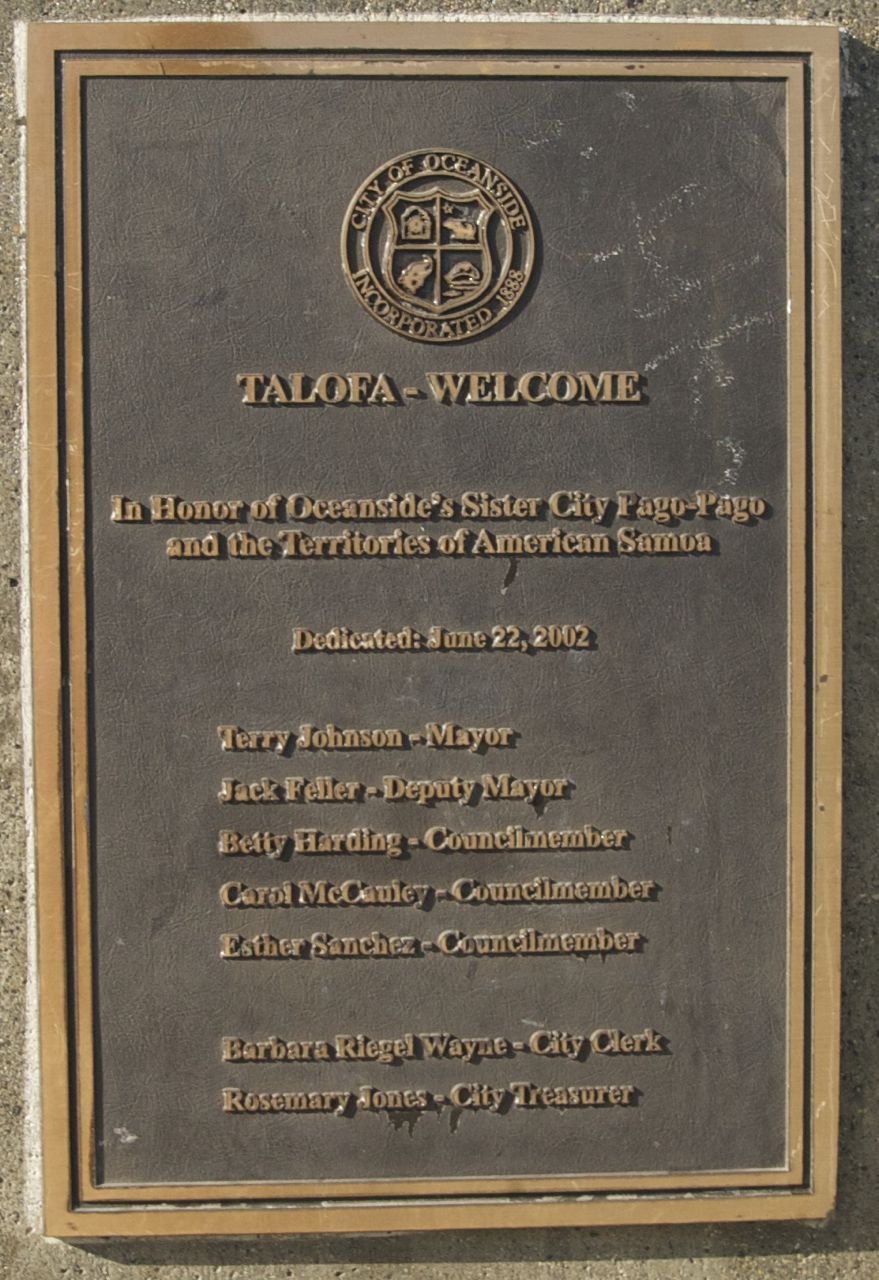
George P McKay Building / Pier View Coffee
300 Pier View Way
📸 2014 © Brigid Parsons




The George P McKay building was completed in 1908. McKay moved from his previous location at the corner of Mission and Cleveland. The first floor of this building housed a general merchandise store carrying a wide variety of items. George and Mary McKay lived upstairs. - from Oceanside Historical Society
Code Enforcement Division Building (thru 2022)
previously at this location
Read MoreOceanside Pier Plaza Amphitheatre
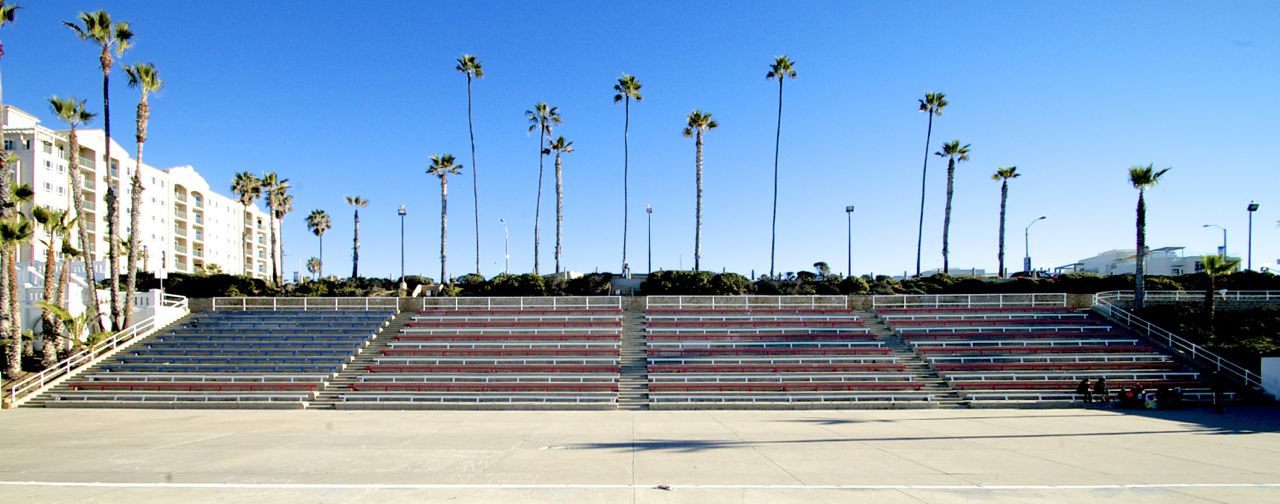
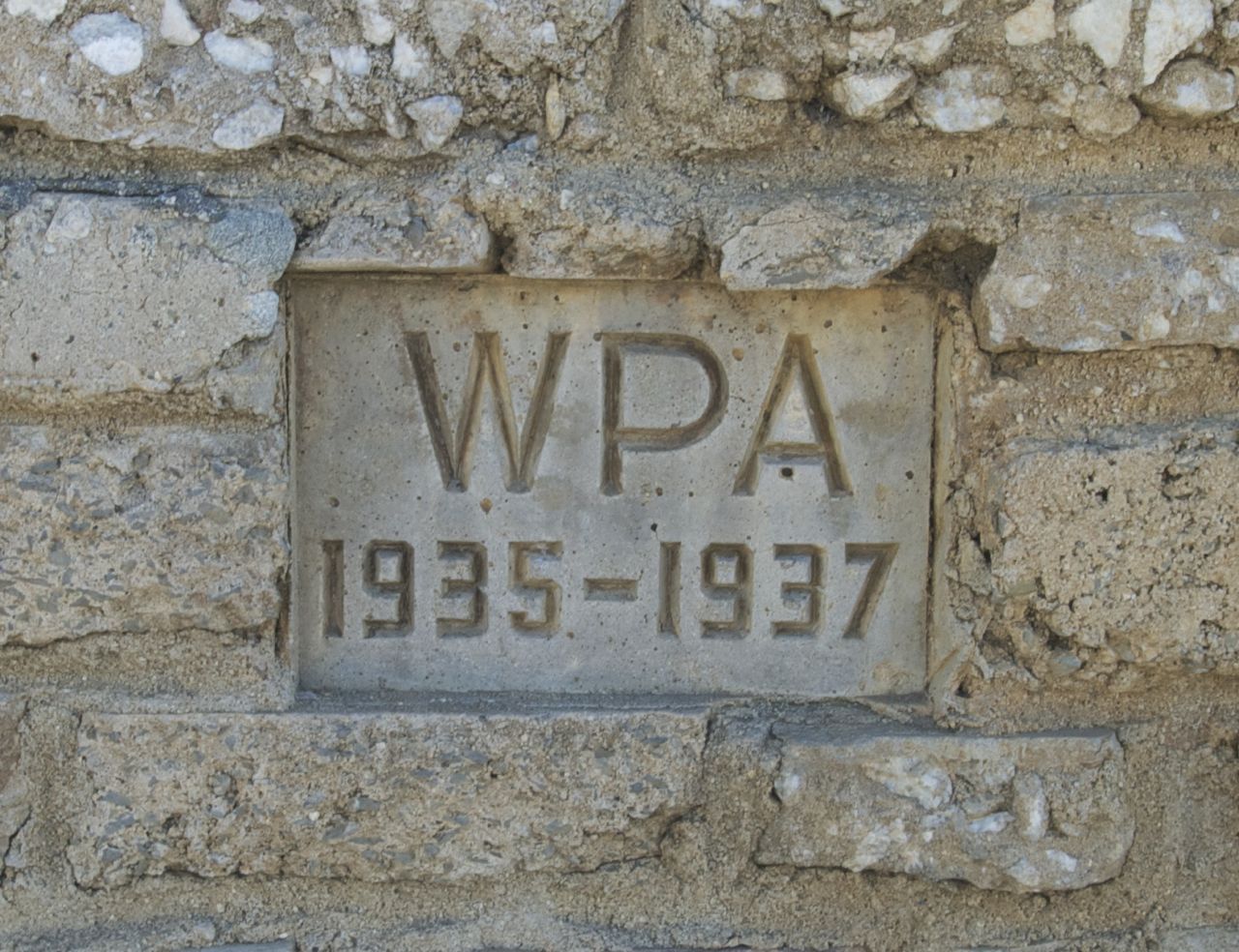
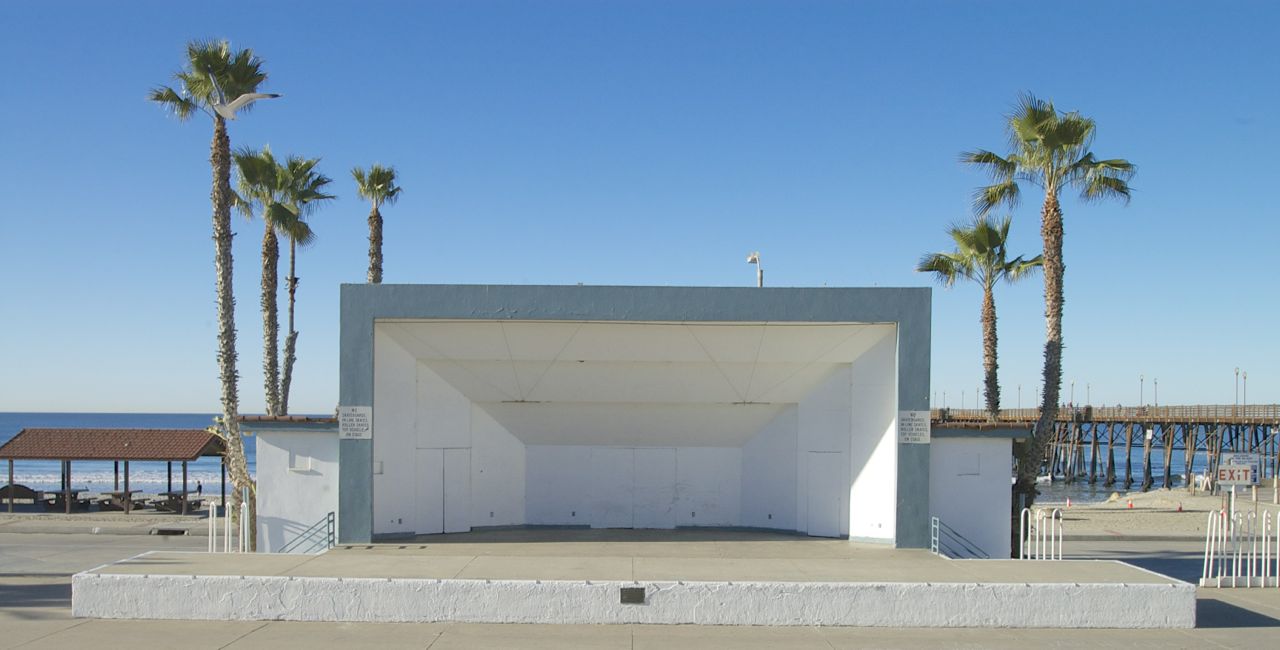
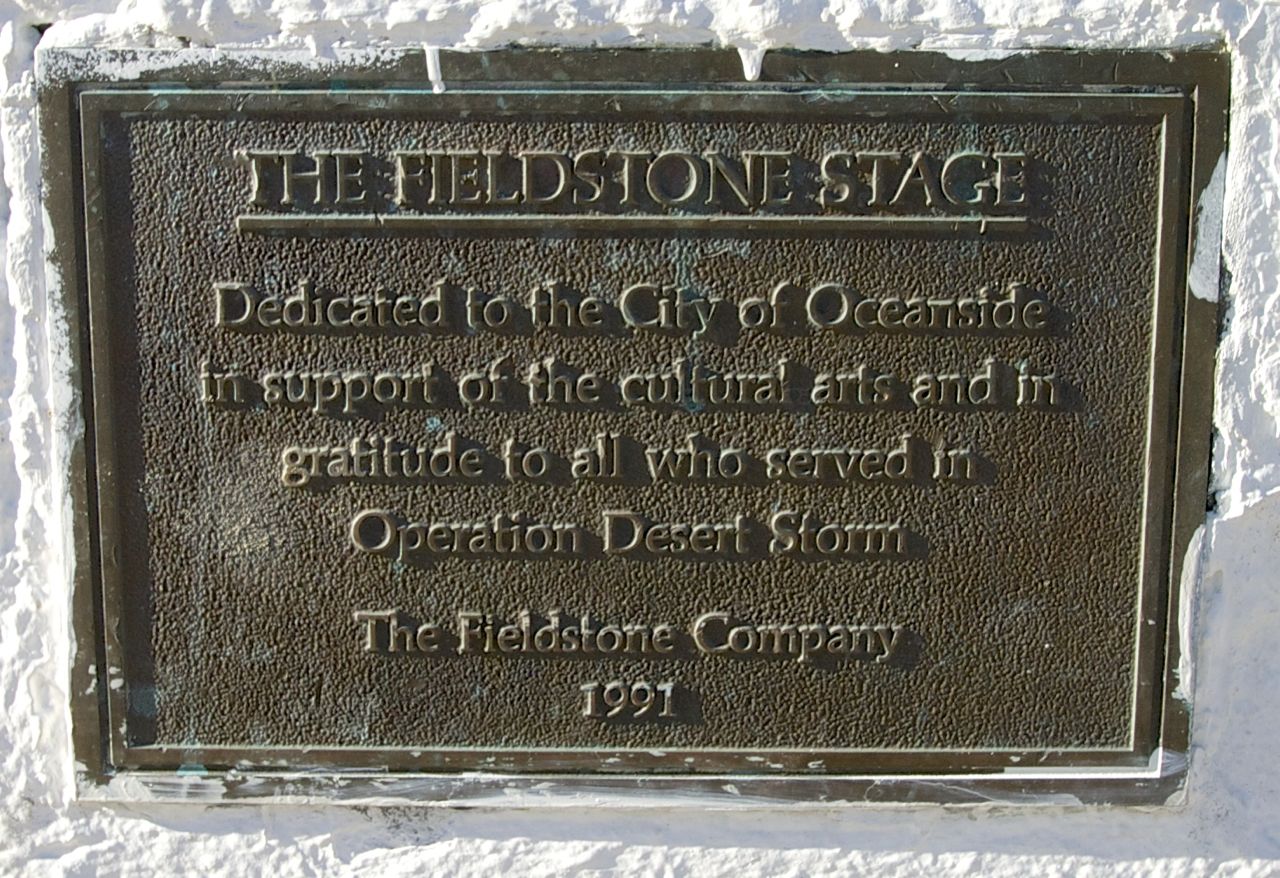
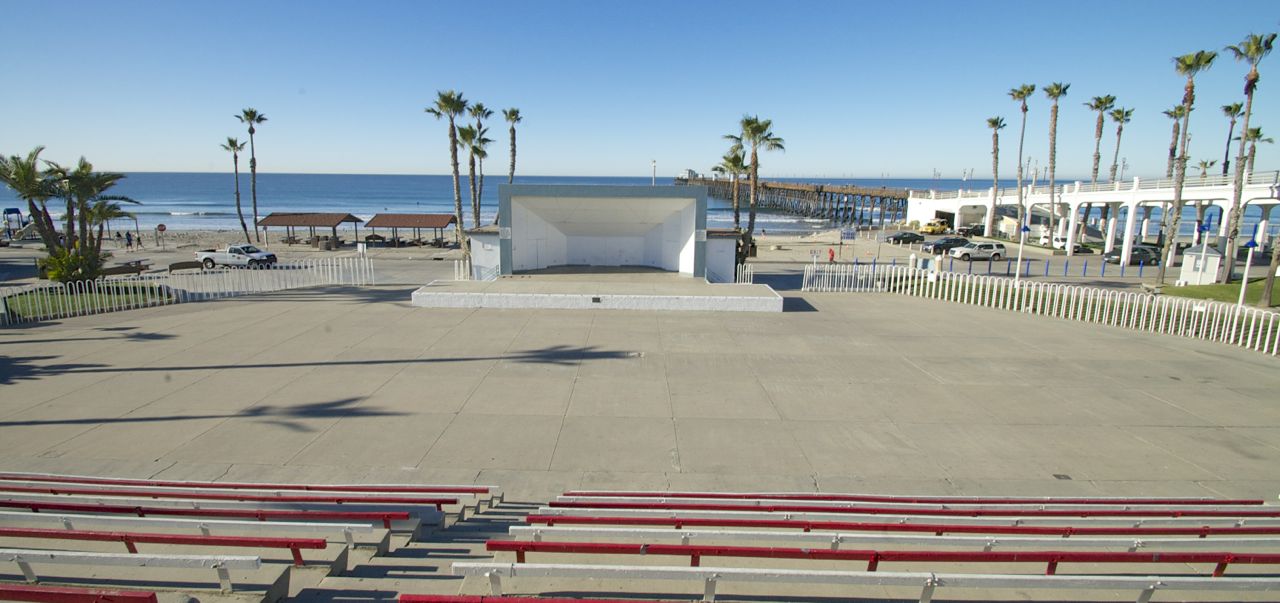
Amphitheater that holds music events and much more.
Oceanside's current bandshell was built in 1950. The first of four bandshells was built in 1919. A stage for the Miss Southern California Beauty Contests, concerts, beach openings, this current bandshell was used in the 2000 movie "Bring It On". - from Oceanside Historical Society
California Welcome Center - Oceanside
Lighthouse
Bunker House






Theodore C Bunker purchased this property in 1885 from J Chauncey Hayes and erected this 2 story brick structure in 1886. Known as the Bunker House, it was a family residence as well as a boarding house. After Mr Bunker's untimely death the family moved to LA. Years later it was renamed the Traveler's Hotel. The building is said to have a colorful history, from the stabbing death of one of its owners to the years of use by prostitutes. It is the oldest remaining brick commercial/residential structure in Oceanside. - from Oceanside Historical Society
Historical Timeline:
1886 - The building was built by Theodore Bunker. The first floor was intended for store usage and the upstairs was planned for a hall. Later that same year, the San Diego Union reported that the $3000 building “will be an ornament to the town,” and it was utilized for a Town meeting hall.
1889 - Mr. Bunker was unable to repay his debt on the property, and it went back to Mrs. Couts, his financier. (Sounds a lot like today!!) During her ownership the property was utilized as a boarding house for railroad workers.
1904 - Mr. Rieke bought the property and added on the back portion of the house. The Riekes became well known builders in Oceanside.
1923 - H.J. Crawford bought the building.
1945 - It was sold in to George Haddox.
1947 - Mr. Haddox sold it to Ralph and Ella Rogers. This lovely couple operated the Rogers Music Co., leasing jukeboxes to local bars throughout the county. They leased the upstairs to boarders. After his retirement from the music business Mr. Rogers named the building the Travelers Hotel.
1970′s - In later years the building fell into disrepair and was associated with prostitution activities in Oceanside.
1977 - The building was abandoned after Rogers passed away.
1983 - Rosaline acquires the building and attempts to establish a restaurant, but challenges with the city led her to drop this idea.
1987-1991 - The City of Oceanside uses the building for offices.
2010 - Apotheque Lifestyle Spa revitalizes the building at 322 N. Cleveland Street bringing new life, positive energy, and wellness to the community of Oceanside.
- from Apotheque
California Surf Museum
Holiday Inn Oceanside Marina
OceanLofts
550 Seagaze Dr
📸 2014 © Brigid Parsons
Modified in 2007 into live-work lofts on top of 1961 Pacific Bell building

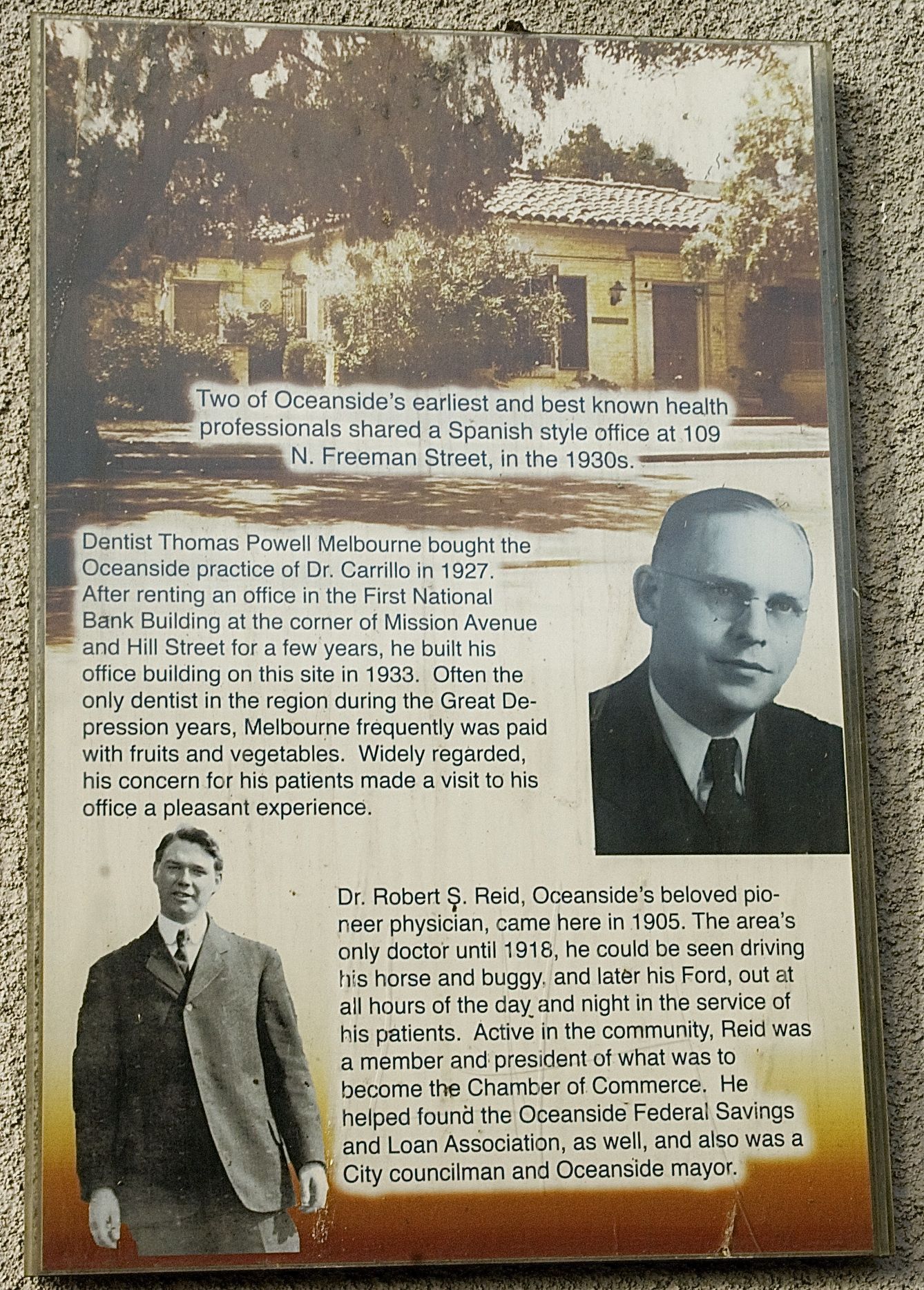
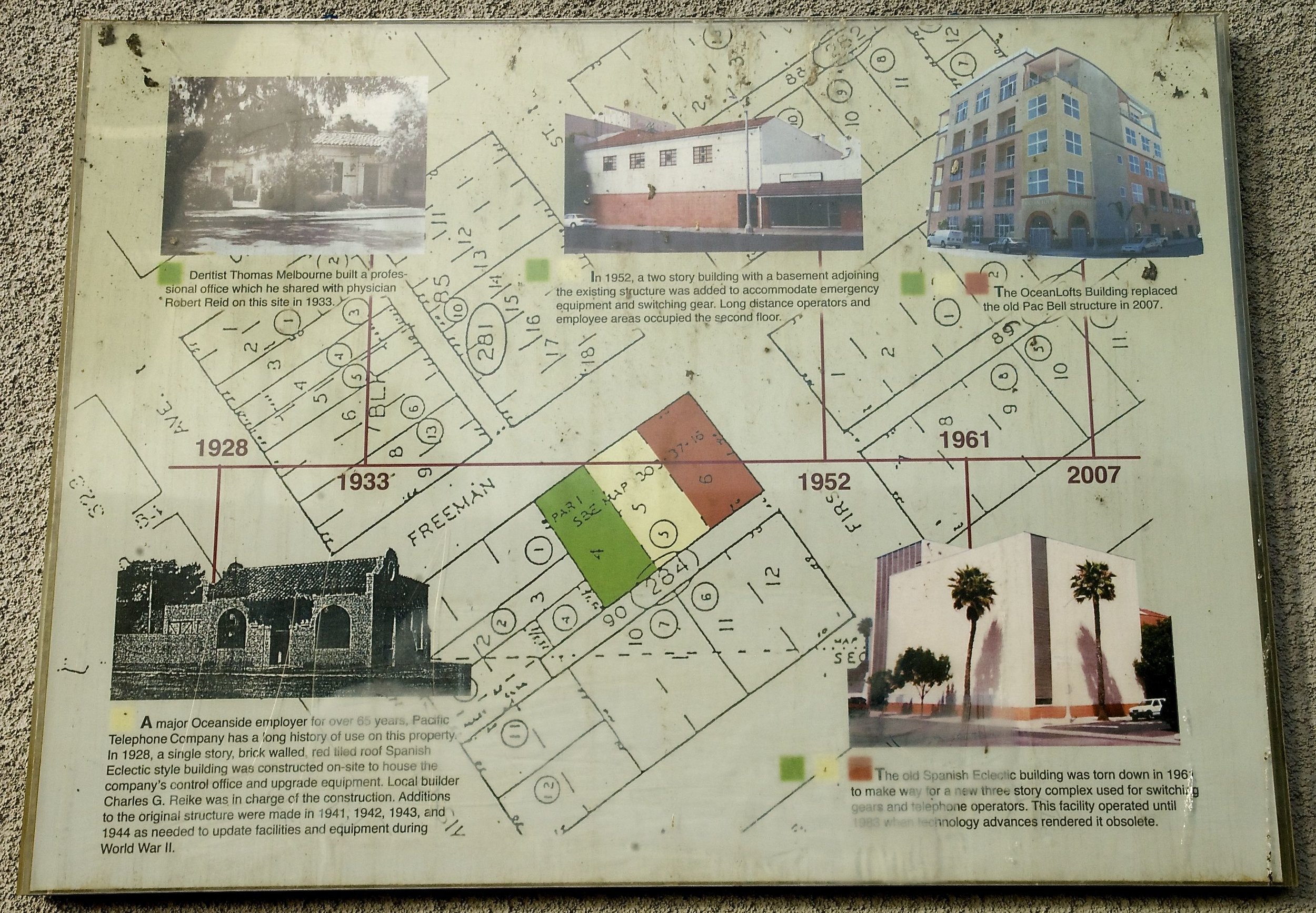
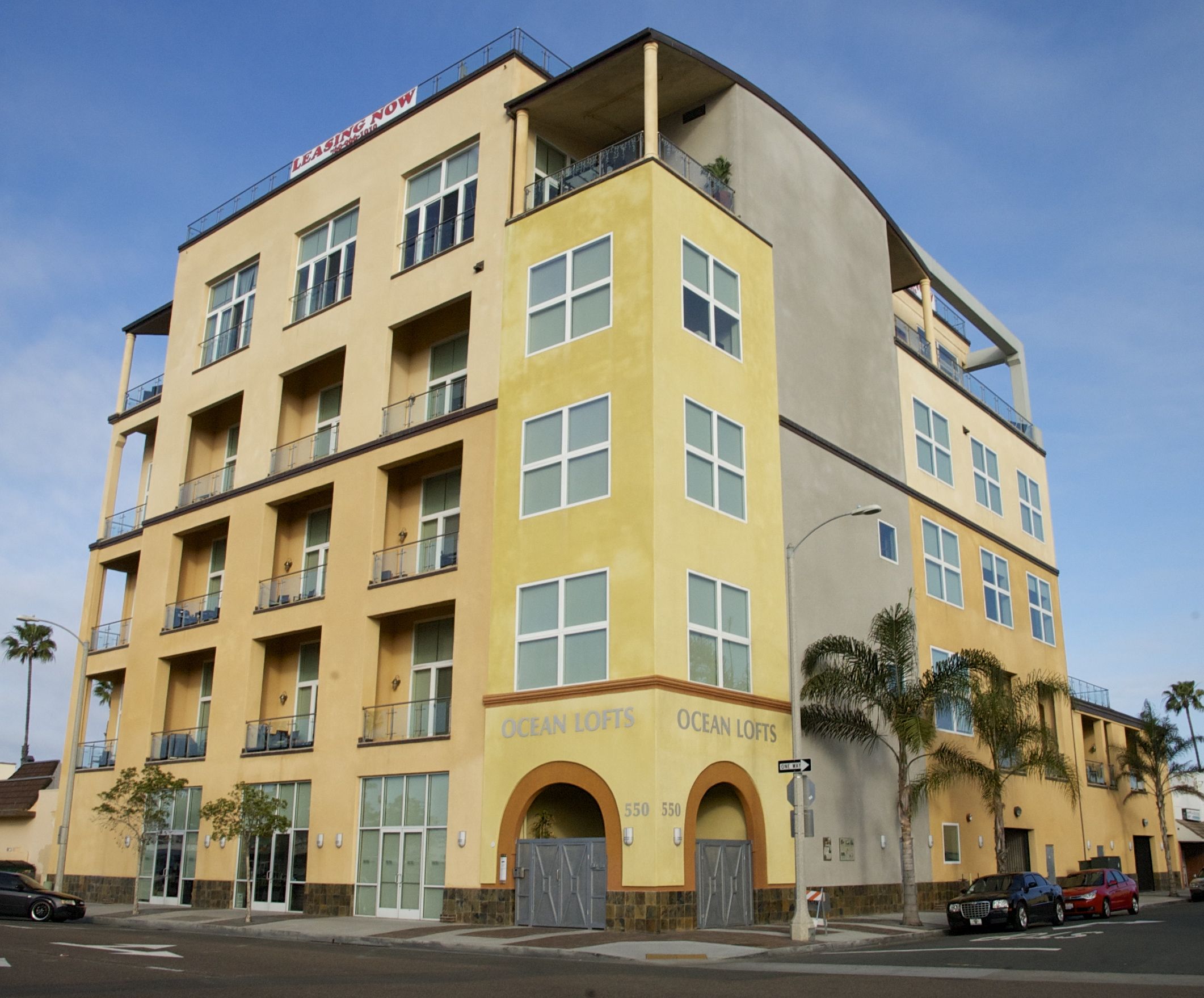
Oceanside Museum of Art
Irving Gill. 1934 - original building
Frederick Fisher, 2008 - expansion
704 Pier View Way
📸 2014 © Brigid Parsons
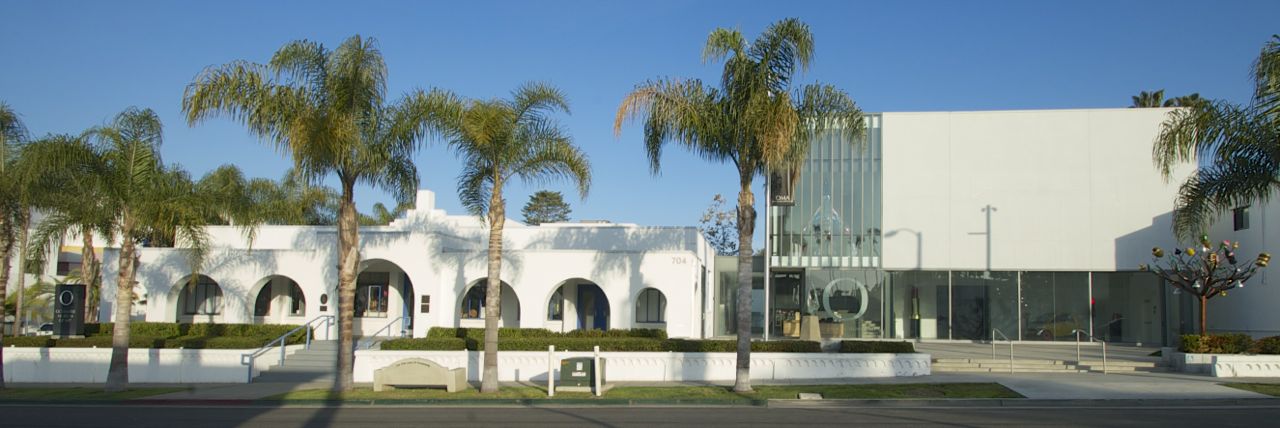
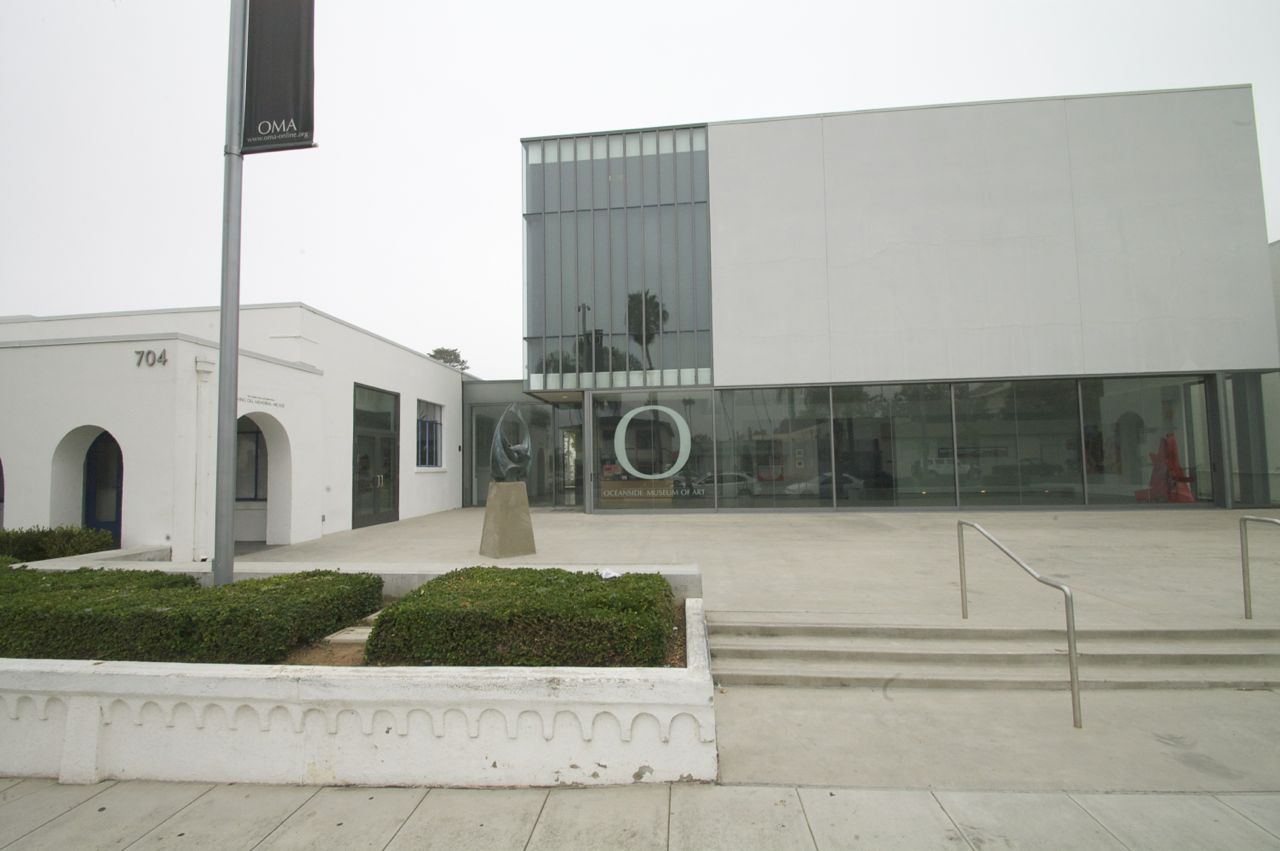

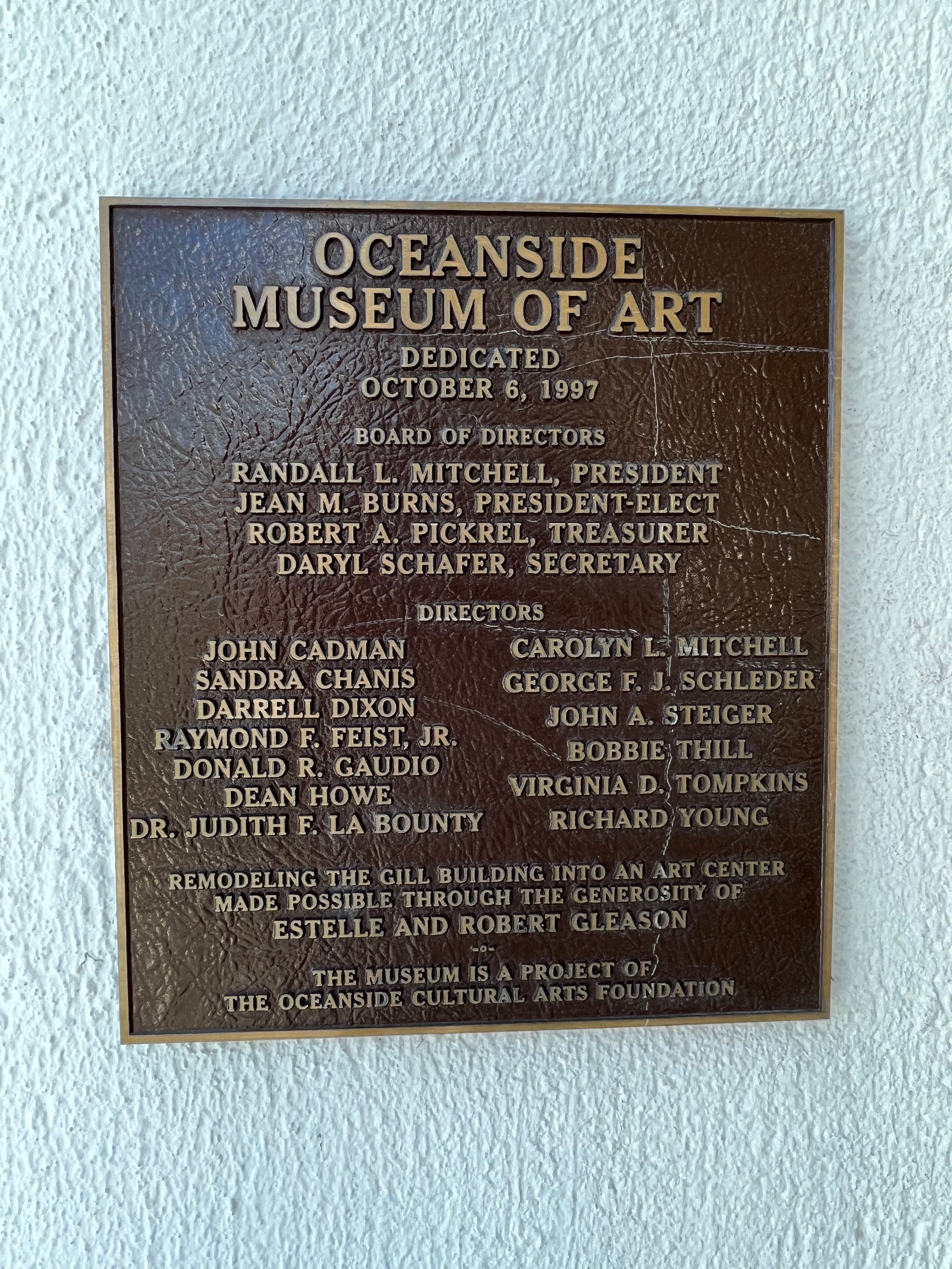
From modest beginnings as a volunteer initiative in 1995, OMA has grown into a dynamic regional institution that contributes to the vibrant cultural life and economic development of Oceanside and the region. OMA presents innovative and exciting individual and group exhibitions of significant local and regional art, as well as exhibitions of national and international interest.
OMA occupies the venerable 1934 former City of Oceanside City Hall designed by pioneering San Diego architect Irving Gill and the Frederick Fisher designed Central Pavilion, which opened in 2008. During its first ten years in the Gill Building, OMA held an average of five exhibitions annually. Since its 2008 expansion, this number has grown to more than twenty exhibitions per year. Additionally, the museum holds an extensive array of programs and events including the popular Art After Dark, Free Family Art Day, 333's Jazz at the Museum, Artists@Work and Masterworks of Body Art. Five rotating galleries with more than 8,000 square feet, collections storage, a workshop and art staging areas, offices, an auditorium, and an outdoor terrace all combine to form the structure of the institution.
Oceanside Civic Center
1989
Coast Highway and Pier View Way
📸 2014 © Brigid Parsons
Civic complex for the City of Oceanside, including city offices and the main Library






